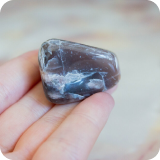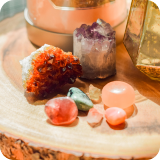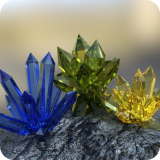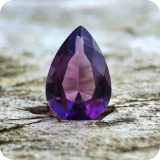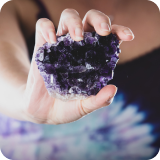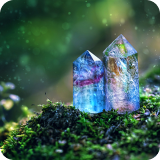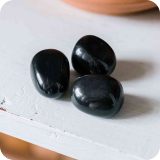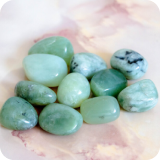- Pyrite Geode
- Citrine Geode
- Amethyst Geode
- Clear Quartz Geode
- Celestite Geode
- Calcite Geode
- Agate Geode
- Chalcedony Geode
- Selenite Geode
- Rhodochrosite Geode
- Stilbite Geode
- Jasper Geode
- Smoky Quartz Geode
- Ammonite Geode
- Aragonite Geode
- Fluorite Geode
- Malachite Geode
- Chalcopyrite Geode
- Prehnite Geode
- Magnetite Geode
- Opal Geode
- Epidote Geode
- Azurite Geode
- Scolecite Geode
- Apophyllite Geode
- Hematite Geode
- Septarian Geode
- Carnelian Geode
- Prasiolite Geode
- Rose Quartz Geode
- FAQ
- In a Nutshell: Start Identifying All Types of Geodes!
Geodes translate to Earth-like and are one of the few crystals that can purify and amplify energies. But what is a Geode rock? What is inside a Geode? What are the types of Geodes? What are the different Geode rock types?
Geode rocks are spherical, natural formations with a hollow cavity of crystals inside. Geode rocks usually look ordinary, but different Geode varieties cost up to $1,000 per carat. Healers say it represents rebirth, as it channels the energy of the thousand crystals inside it.
There are two main types of Geodes – Volcanic and Sedimentary – but there are dozens of Geodes.
We will discuss all 30 types of Geodes with different minerals, their interior and exterior colors, features, benefits, properties, and locations.
While there are Geodes with 25 different mineral compositions, they all come from two main types of rocks.
- Volcanic: When lava cools, it leaves air pockets filled with minerals from the seeped-in groundwater. Ultimately, these minerals grow undisturbed for hundreds of thousands of years to become Geodes.
- Sedimentary: When dirt fills up on the decaying bodies of animal remains, it creates air pockets and cavities of minerals. These minerals grow untouched for millions of years to turn into Geodes.
That doesn’t mean there are only two Geode varieties in the whole wide world. Today, we’ll learn about 30 Geode varieties (+1 bonus at the end) with their locations, uses sizes, and colors (interior and exterior).
Pyrite Geode
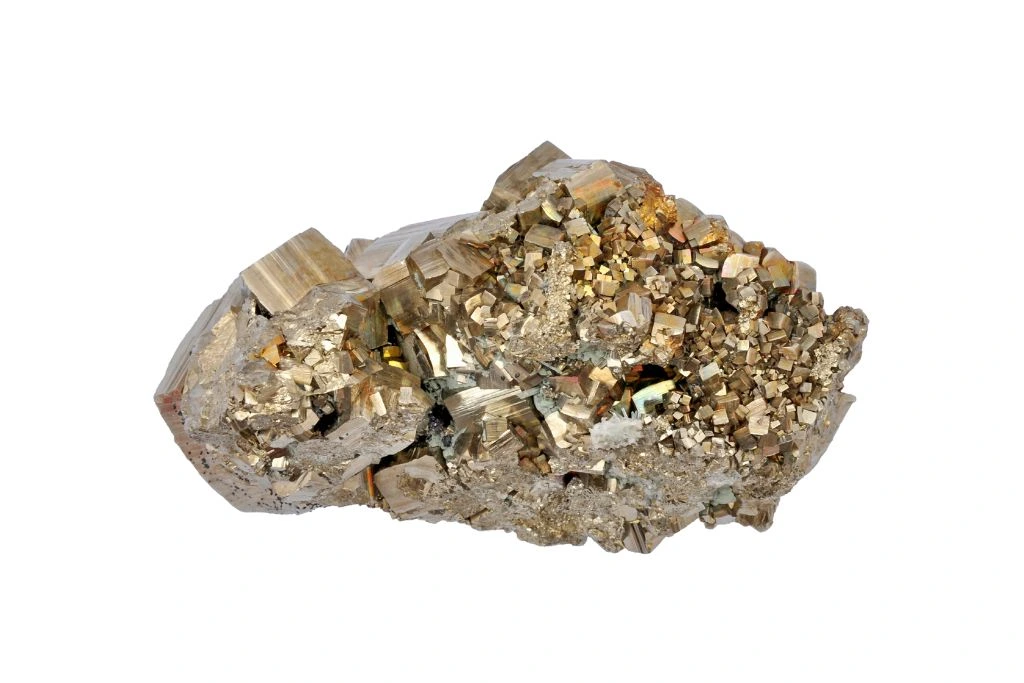
Pyrite Geodes are best for grounding and have a golden interior with purple, white, brown, blue, yellow, green, or pink crystals. They often grow with Amethyst, Quartz, Calcite, or Rhodochrosite crystals. Pyrite Geodes are typically used to attract good fortune, success, and prosperity.
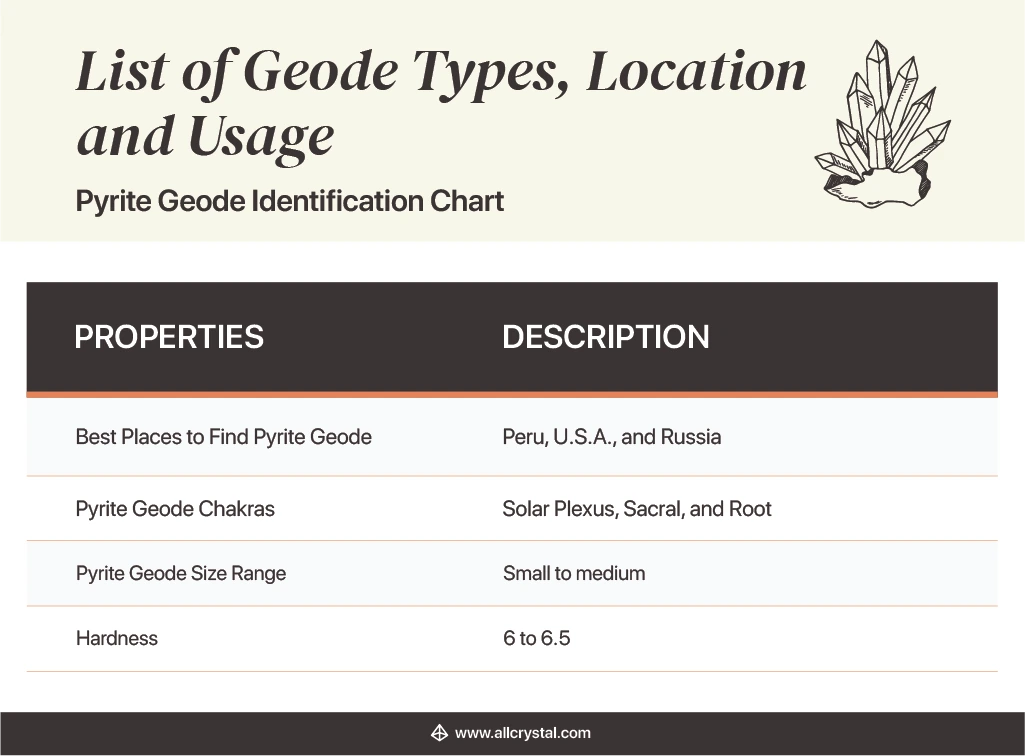
Citrine Geode
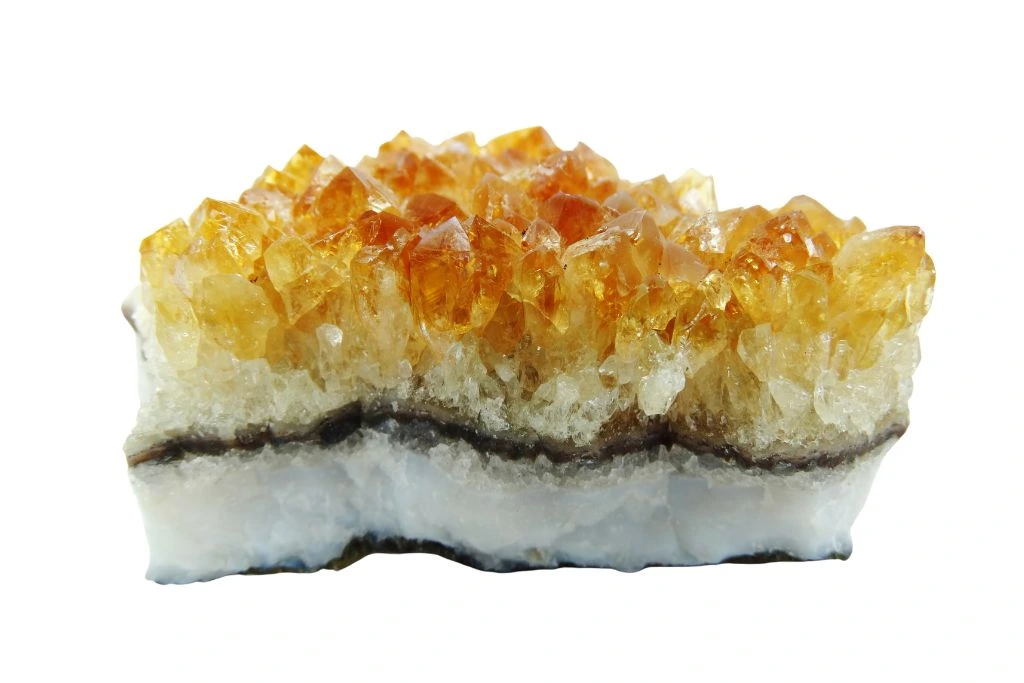
Citrine Geodes attract luck, success, and abundance. They have a black or beige exterior with vibrant yellow, orange, or white interiors. They usually form in eggs, oblongs, squares, teardrops, pairs, cathedrals, or caves.
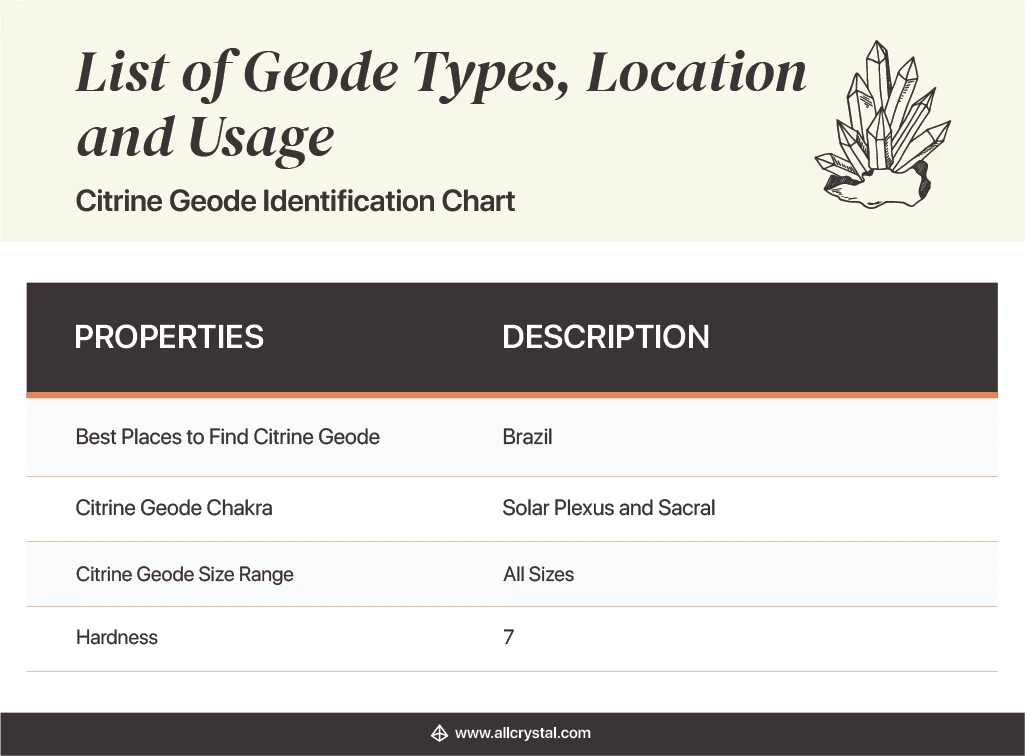
Amethyst Geode
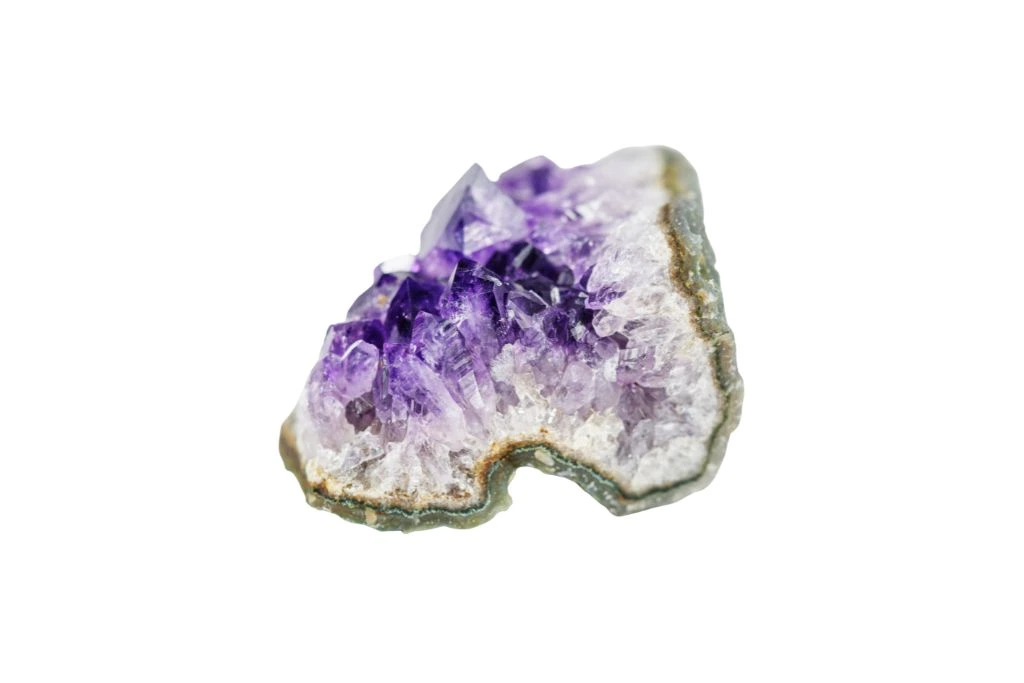
Amethyst Geode forms in caves, cathedrals, pairs, druzy, and eggs. Purple Quartz Geodes raise your vibrations and activate dormant psychic abilities.
From purple to pink, black, red, and gray, Amethyst Geodes show many interior colors based on origin and black, gray, or white exteriors. The most coveted Amethyst Geodes come from Uruguay.
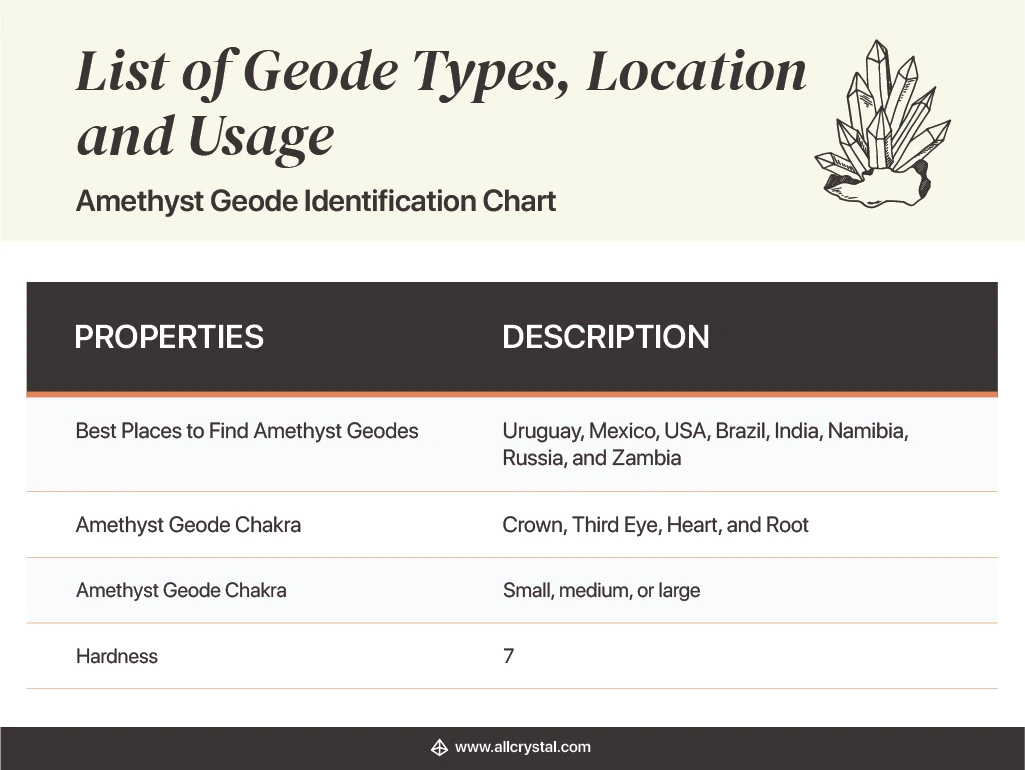
Clear Quartz Geode
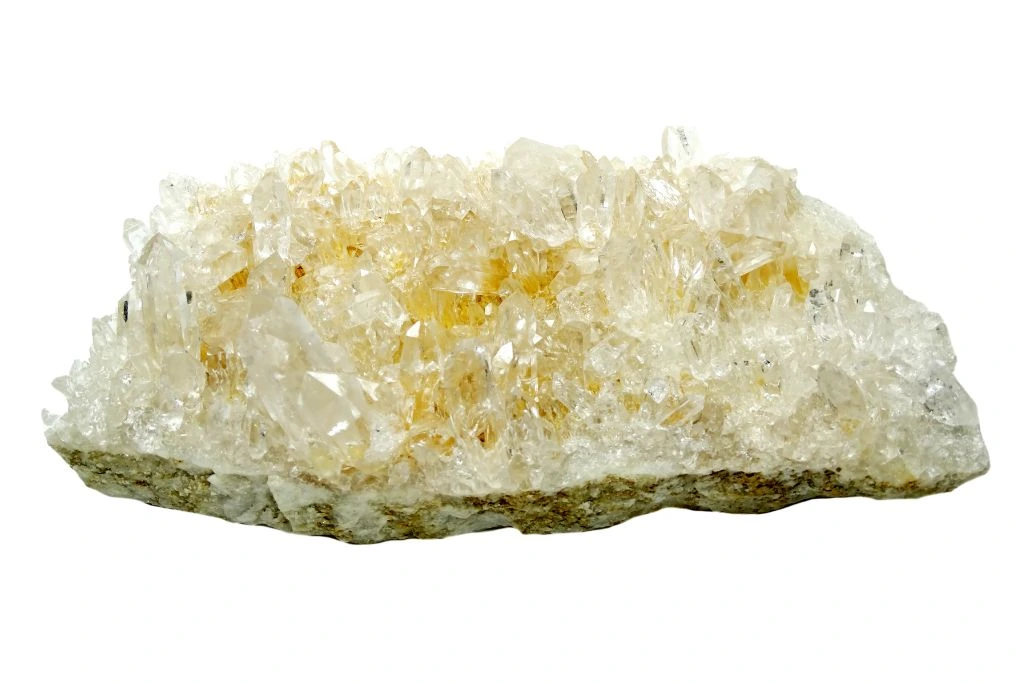
Clear Quartz is the most common type of Geode crystal because they purify and amplify energies. Quartz Geodes show white or gray druzy interiors and yellow, brown, beige, and gray exteriors. Sometimes, they show blue, yellow, or red Agate banding with large towers or points inside.
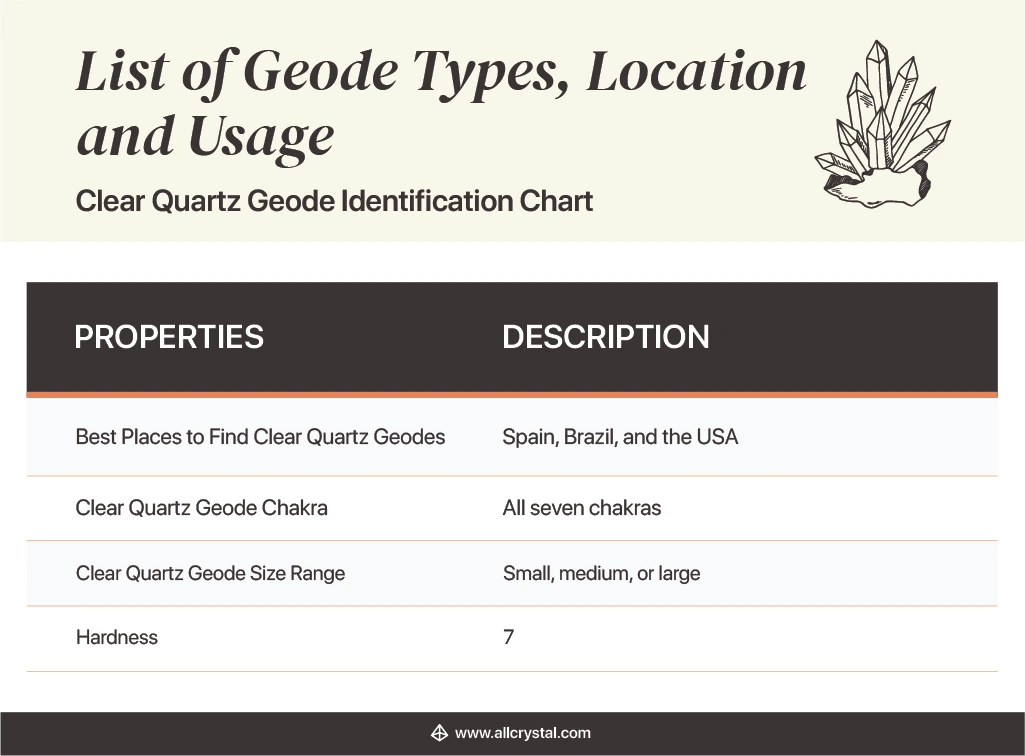
Celestite Geode
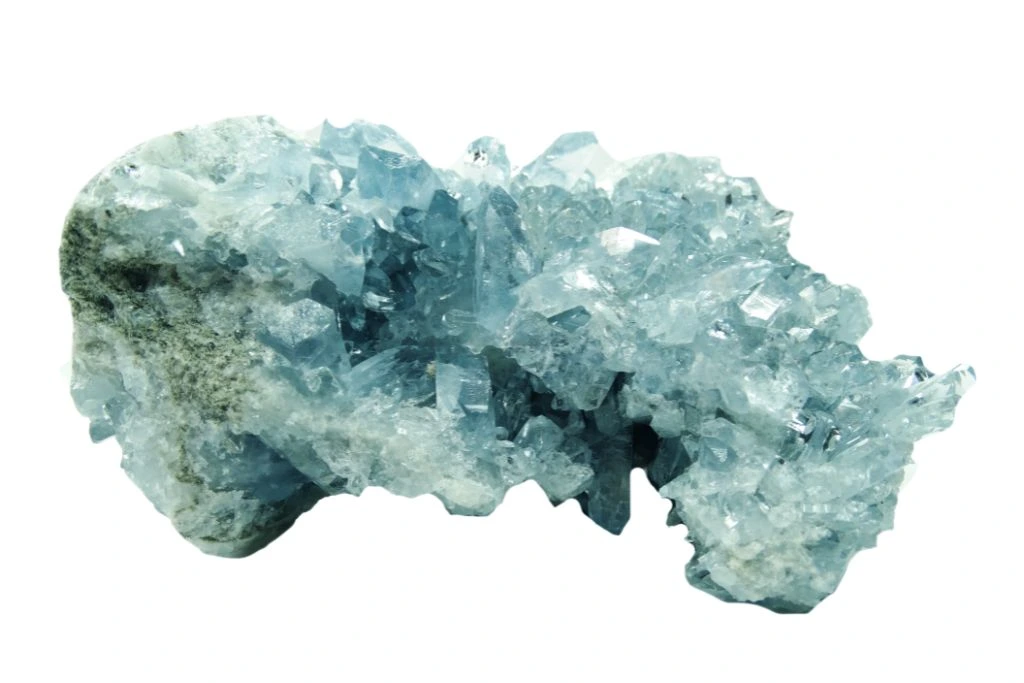
Celestite mostly forms Geodes; hence it’s not widely used in jewelry. They’re commonly basketball-sized with light exteriors and glacial-blue interiors. Crystals inside the Celestite Geode may be shades of pale blue, but not druzy. It’s excellent for connecting with the higher realm.
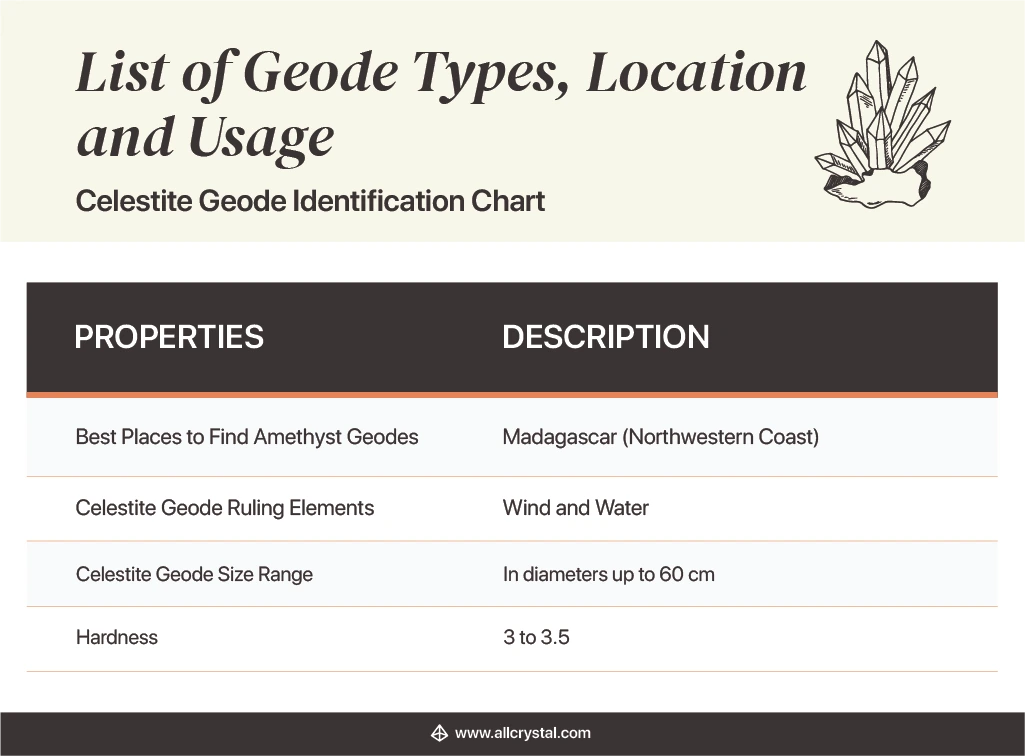
Calcite Geode
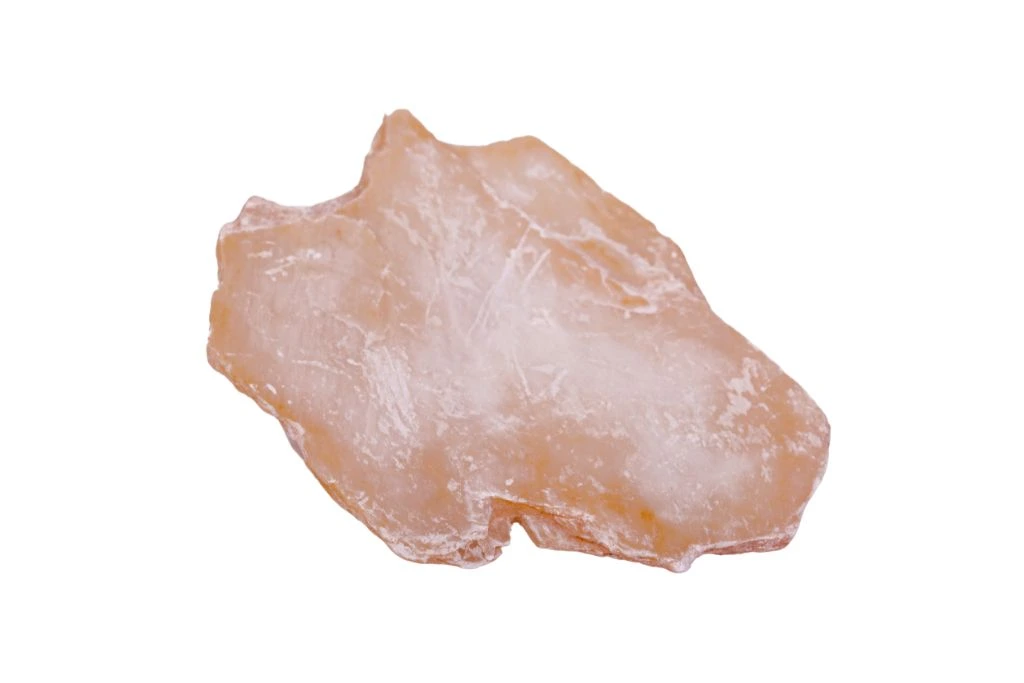
Calcite Geodes with druzy white or off-white interiors are easy to find around Texas. They’re often tiny but powerful enough to clear negativity, hexes, and bad mojo. The exterior of Calcite Geodes is usually yellow, beige, brown, or gray.
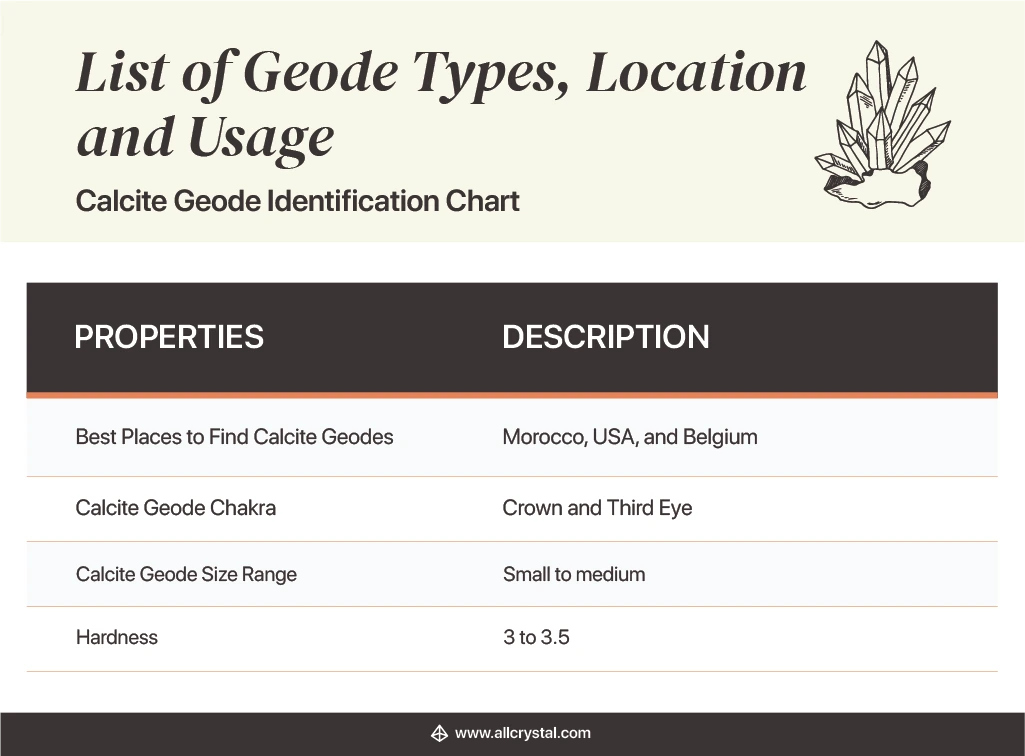
Agate Geode
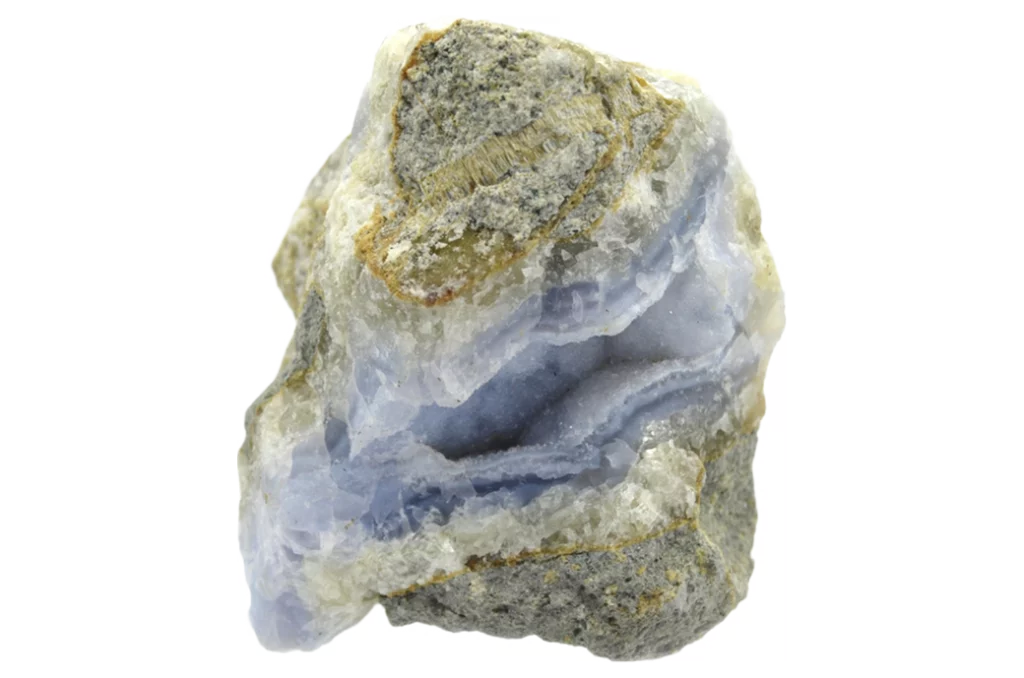
After Quartz, Agate Geodes are the most commonly available Geodes. They typically appear in Lace, Blue, Pink, White, Red, Occo, Coral, and Brown varieties with Agate banding.
Agate Geodes are typically found along beaches, rivers, and lakes amongst gravel with colorful exteriors. They naturally come in round or egg shapes and work mostly on lower chakras.
When they’re sliced into coasters, they’re called Novelty Geodes or Sliced Geodes.
Where do you find Agate Geodes? They’re mostly found in the USA, Canada, India, Chile, China, Morocco, Germany, Brazil, and Australia.
Chalcedony Geode
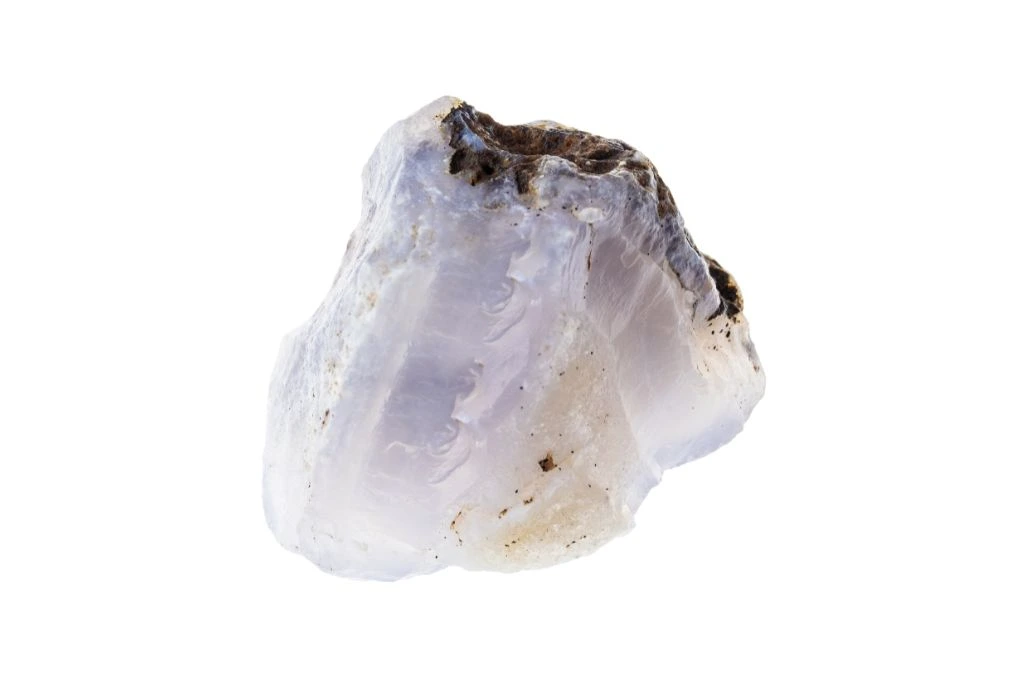
Chalcedony rocks include Agate, Chrysoprase, Bloodstone, Aventurine, and Carnelian. They’re great for healing, harmony, and success.
Chalcedony stones don’t always form Geodes, but when they do, their interiors show white, pink, blue, yellow, gray, orange, red, and purple crystals. The exterior of Chalcedony Geodes may be bright, dull, or dark.
The best places to find Chalcedony Geodes are Morocco, Mexico, India, Russia, Namibia, Egypt, Australia, Uruguay, USA, and Brazil.
Selenite Geode
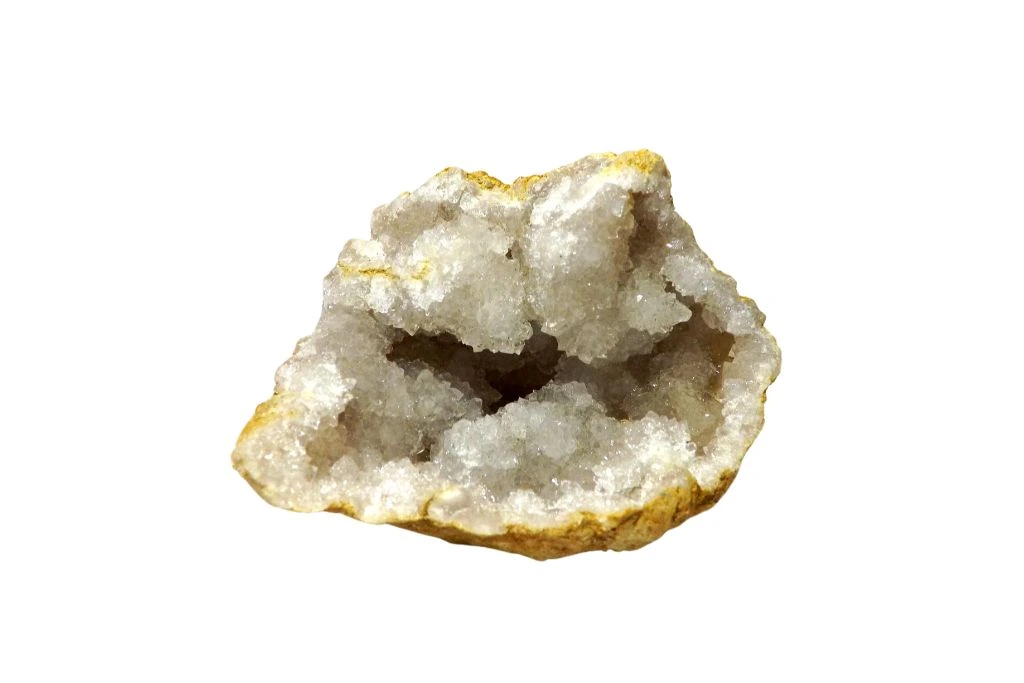
You know Selenite means purification already, but in the Geode form, it works as a generator.
Most people don’t think of Selenites as Geodes, but Selenites can form as Geodes within caves as large as 98 by 33 feet!
Selenite Geodes form with Amethyst, Barite, and Chalcedony with white, yellow, beige, purple, pink, gray, and brown interiors and beige or brown exteriors.
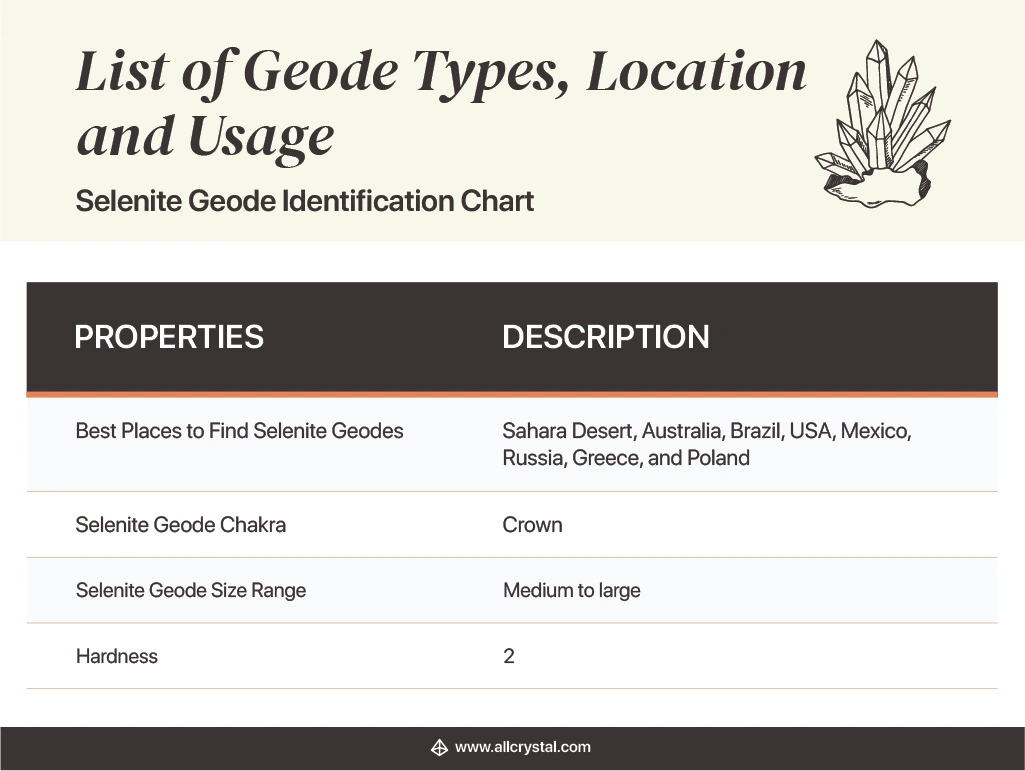
Rhodochrosite Geode
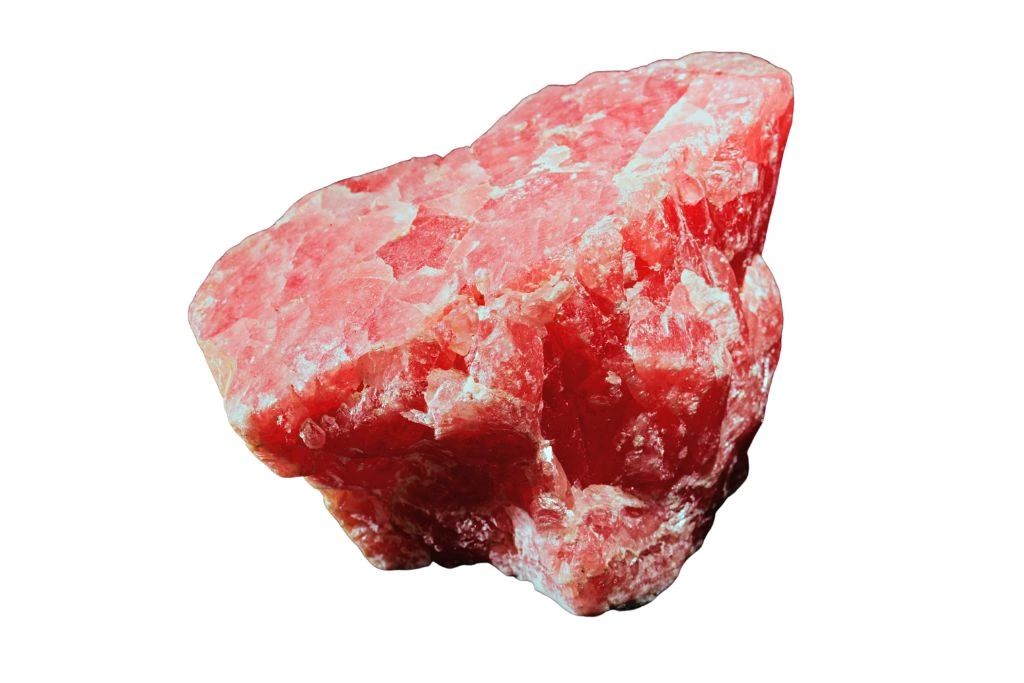
The pink, white, or rose bands inside Rhodochrosite Geodes may form clusters, sprays, crystals, druzy, or masses. Rhodochrosite Geodes show black, gray, beige, yellow, or green outside. The meaning of this pink type of Geode is compassion. It’s commonly sold in pairs, caves, slabs, or slices.
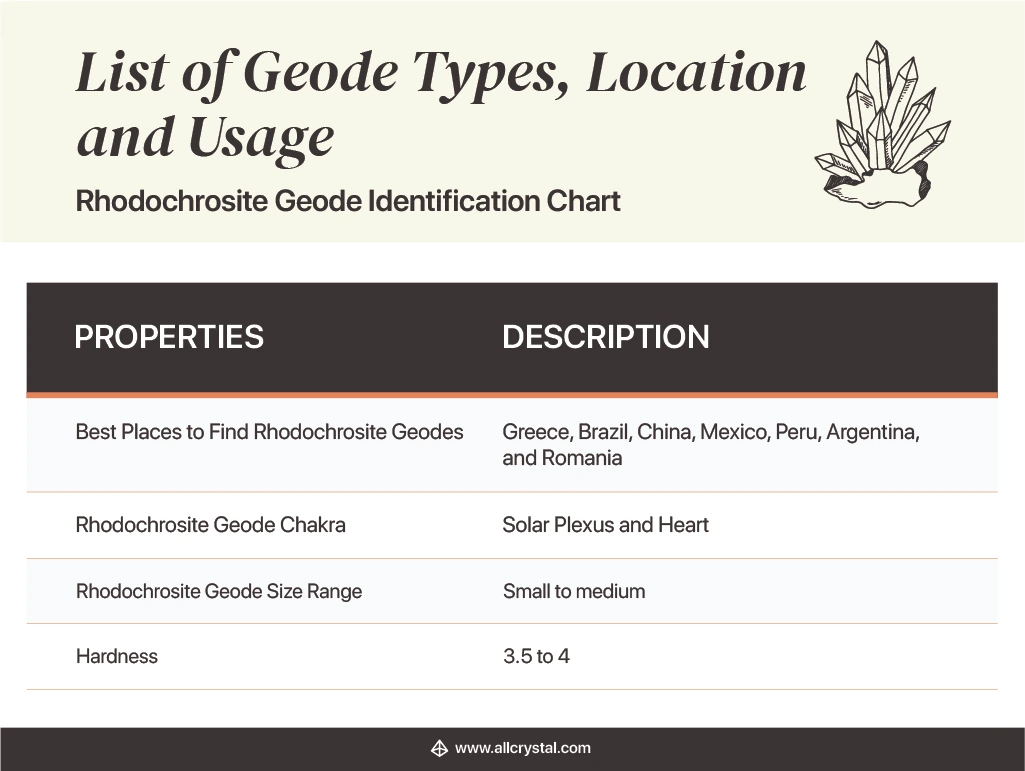
Stilbite Geode
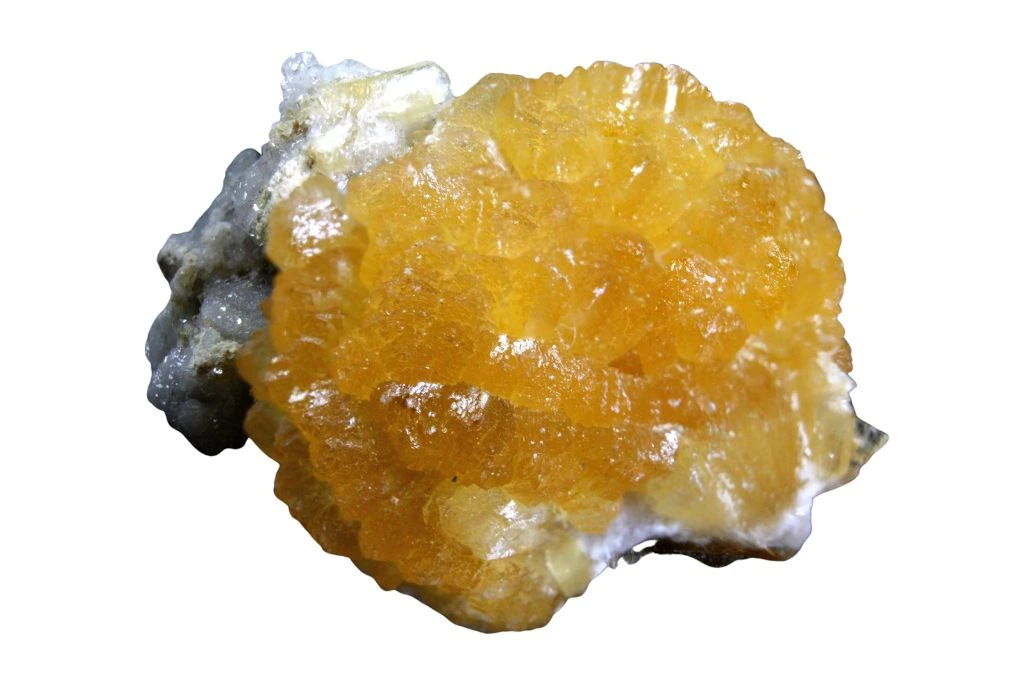
Resembling Porphyry crystals on the outside, Stilbite Geodes show black, red, orange, and gray colors inside. They might form crystals, sprays, wands, or needles inside and black, gray, green, or peach exteriors.
Stilbite Geodes may form with other crystals like Amethyst, Mesolite, Apophyllite, Heulandite, Chalcedony, Epidote, and Prehnite.
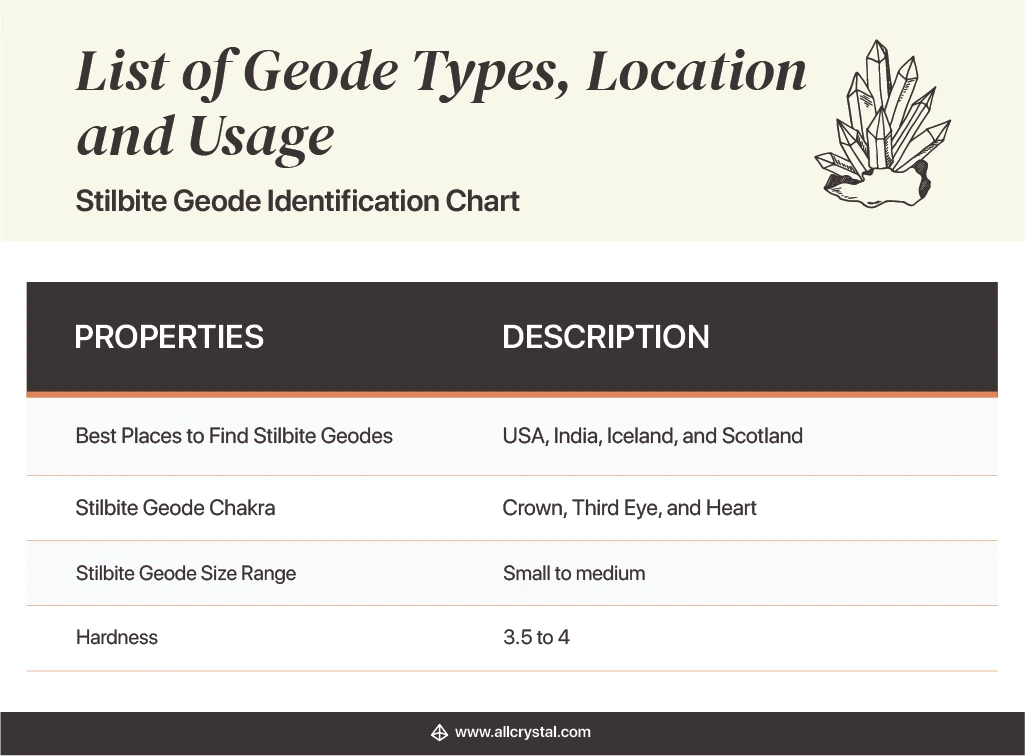
Jasper Geode
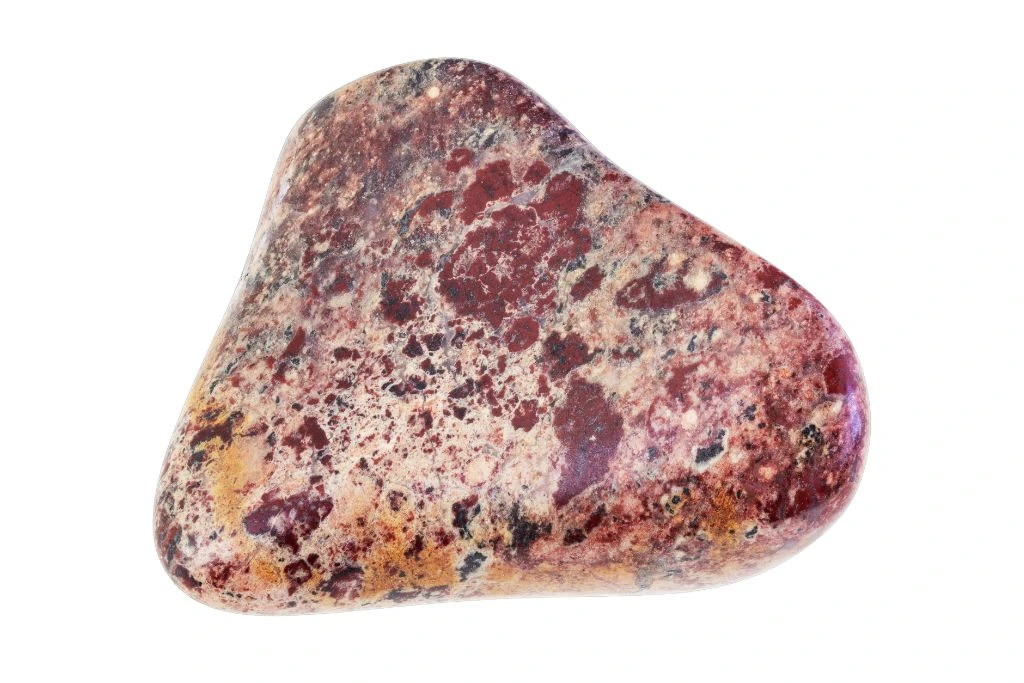
From Butterfly Jasper to Rose Jasper, Lace Jasper, and Ocean Jasper, Jasper Geodes may form different interior colors. In most cases, they’ll have pockets of druzy, floaters, or botryoidal formations inside the Geode. The exterior of Jasper Geodes ranges from light to dark colors.
Geodes in Jasper varieties often range from medium to large sizes with crystals like Celestite, Chalcedony, and Agate. Their metaphysical properties are based on colors. Explore more about 7 chakra colors, meanings, and properties here.
Smoky Quartz Geode
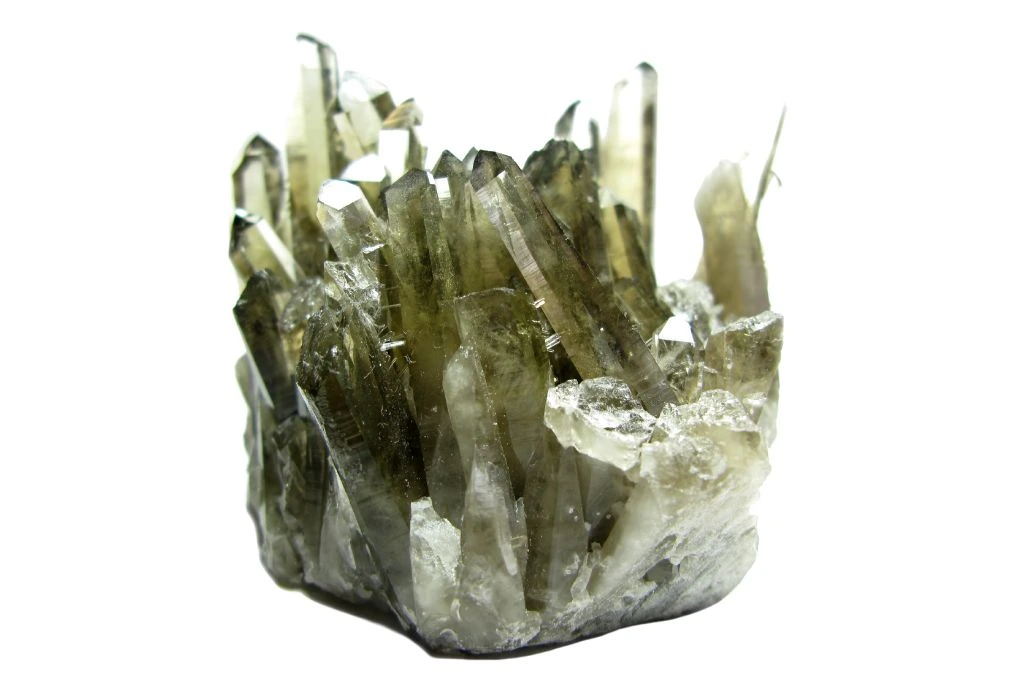
Smoky Quartz Geode forms dark interiors with light banding of yellow, white, brown, and red hues. Typically, the exterior of Smoky Quartz geodes may be yellow, beige, red, gray, or black. They’re often used for clearing hexes and curses.
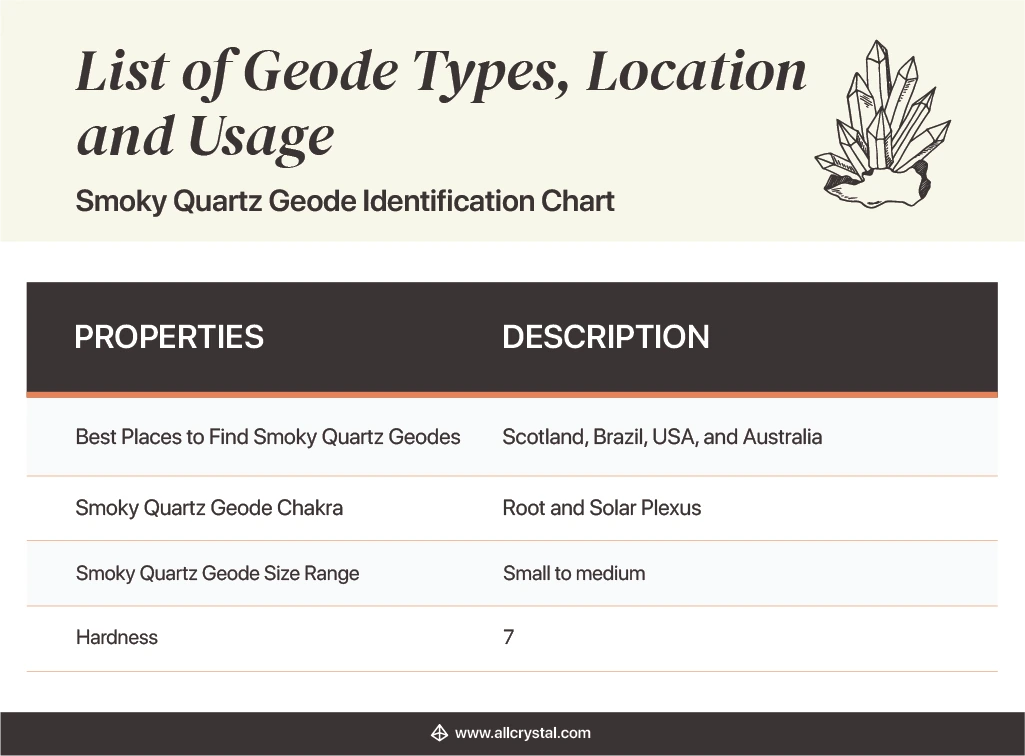
Ammonite Geode
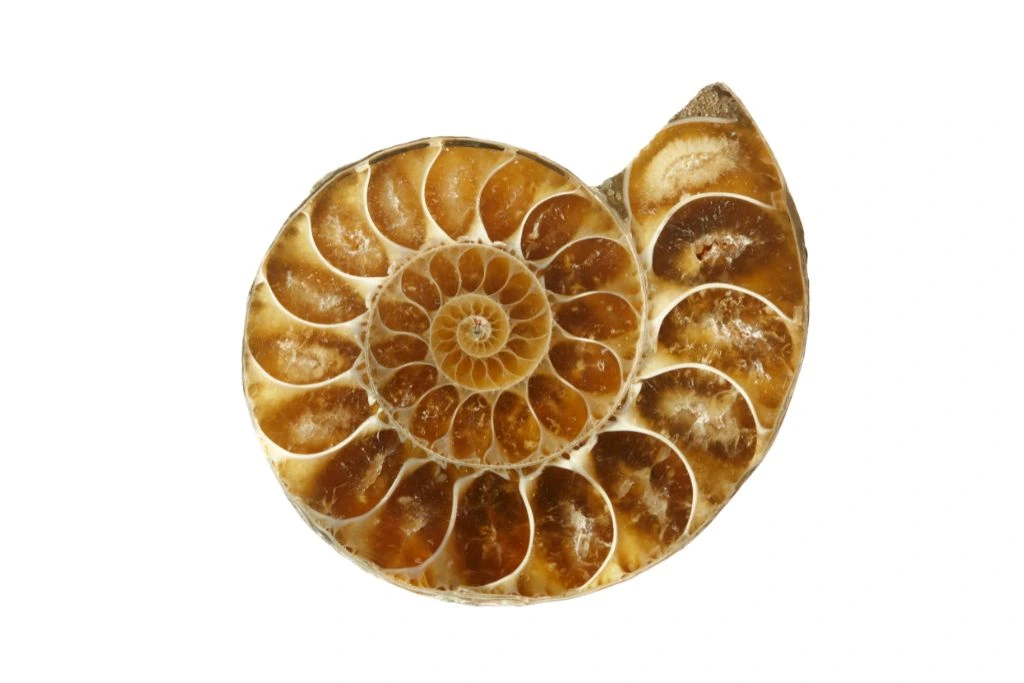
A marine sedimentary rock, Ammonite Geodes may show one or more druzy pockets inside each chamber of the fossilized Ammolite. They may show orange, brown, red, yellow, white, gray, blue, or black interiors and originate from minerals like Aragonite and Calcite.
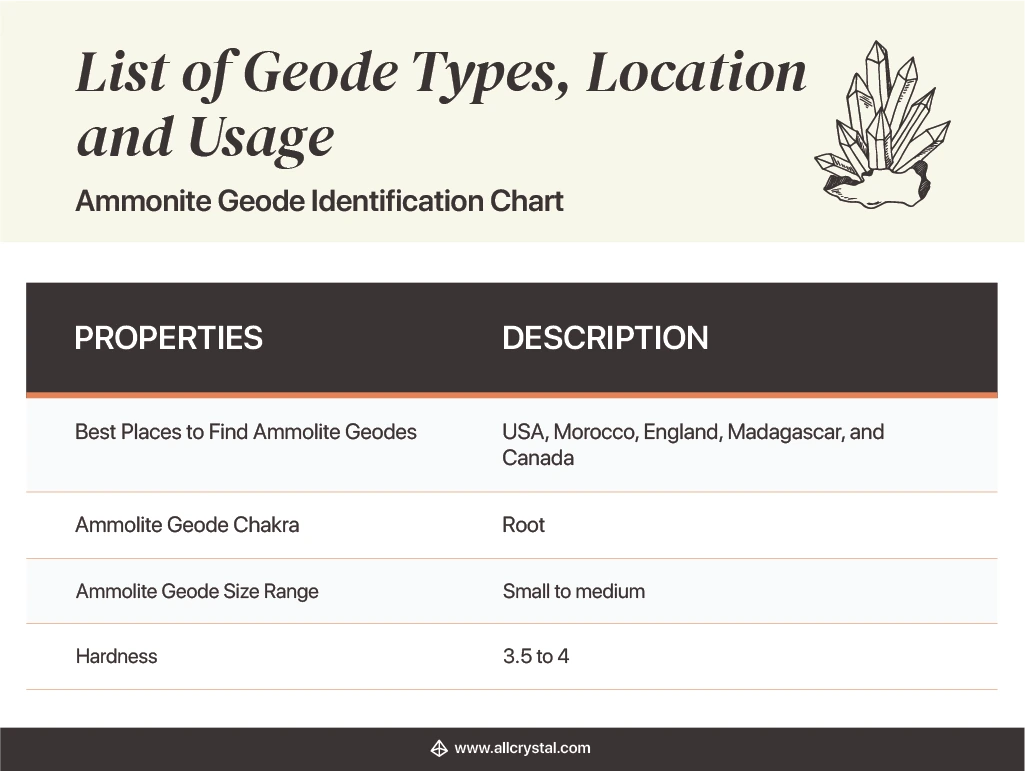
Aragonite Geode
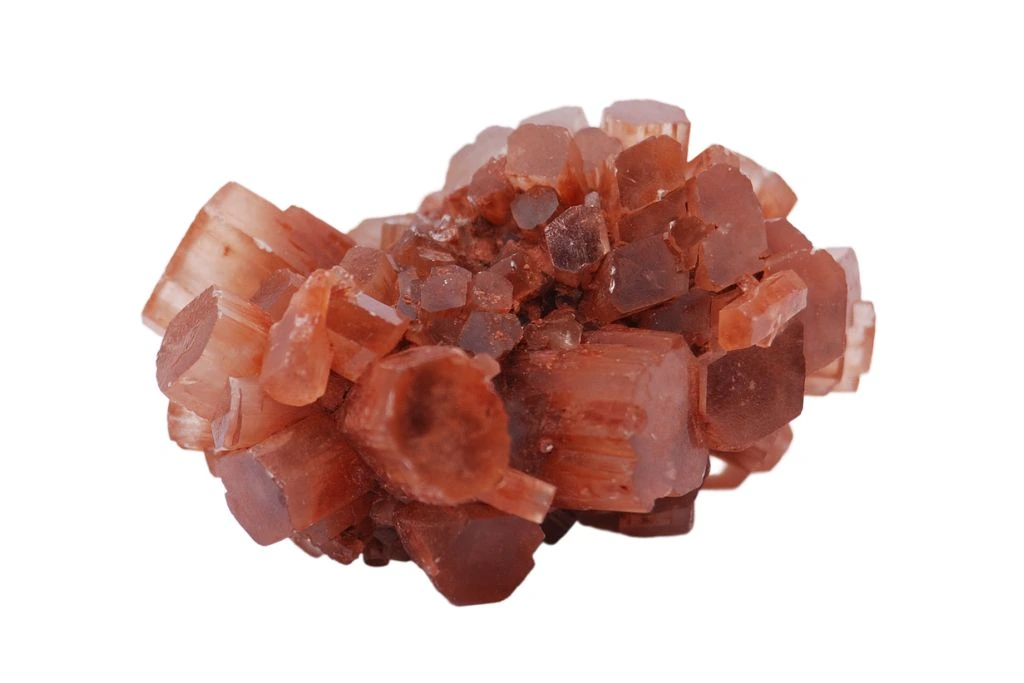
Aragonite forms Geodes and clusters with orange, yellow, white, blue, red, or gray interiors that may be filled with druzy crystals or sprays. It’s a lower chakra stone often used for Reiki, feng shui, and physical healing.
Aragonite Geodes have a yellow, beige, or brown exterior and often form with other crystals like Kutnohorite, Quartz, Scolecite, Coral, Calcite, and Chalcedony.
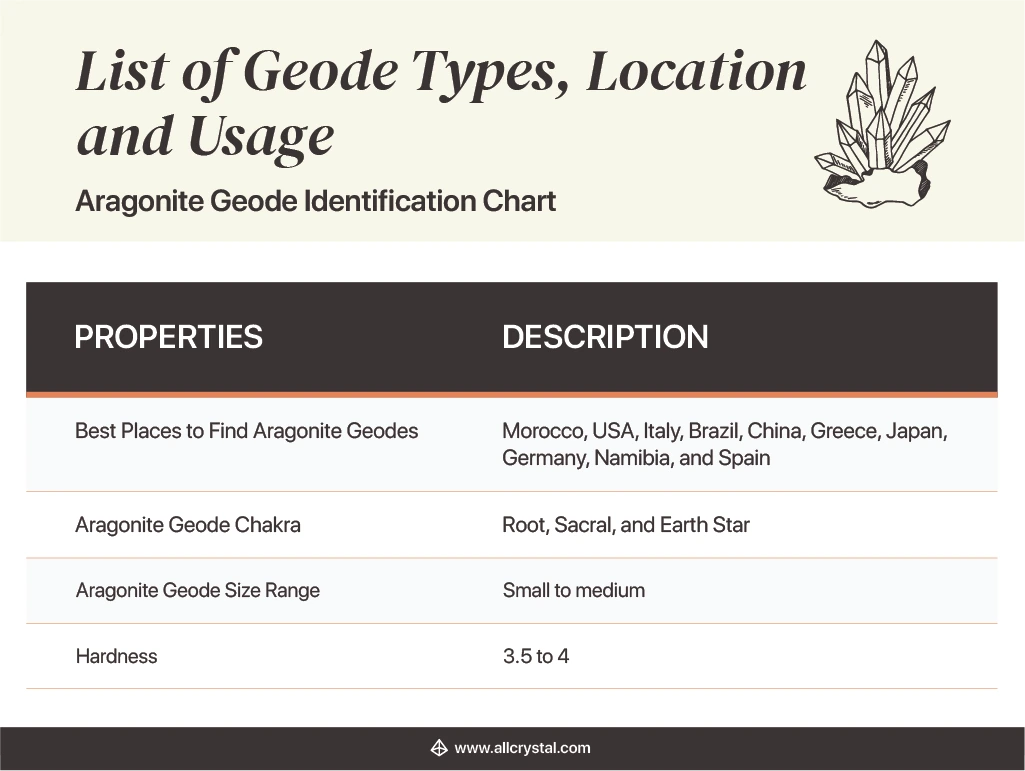
Fluorite Geode
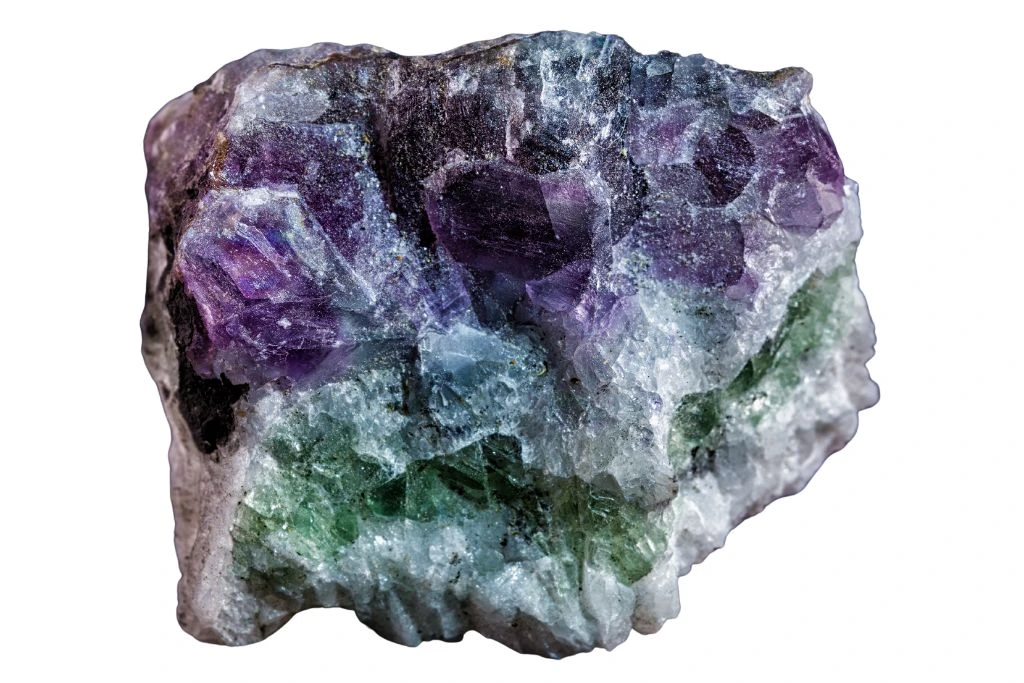
Forming green, purple, blue, gray, brown, red, and yellow interiors, Fluorite Geodes balance multiple chakras simultaneously. Sometimes, Fluorite Geodes show up with tiny eggs inside. It may form with other crystals like Malachite, Chalcedony, Amethyst, Feldspar, or Black Quartz.
Fluorite Geodes have a light-colored exterior.
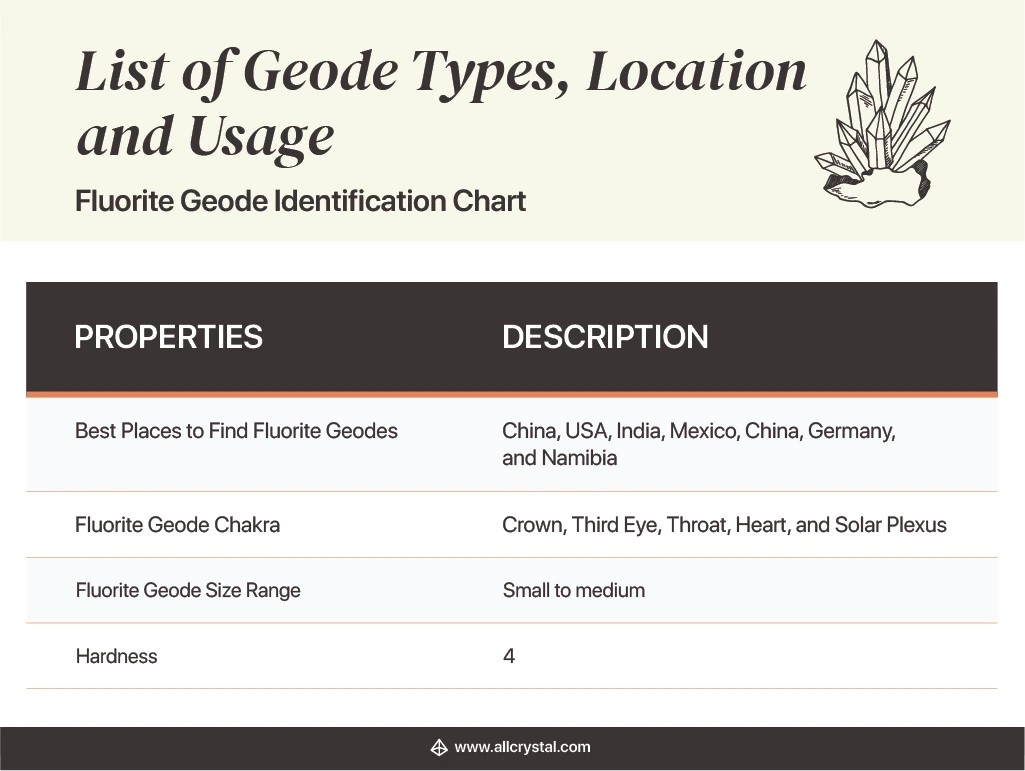
Malachite Geode
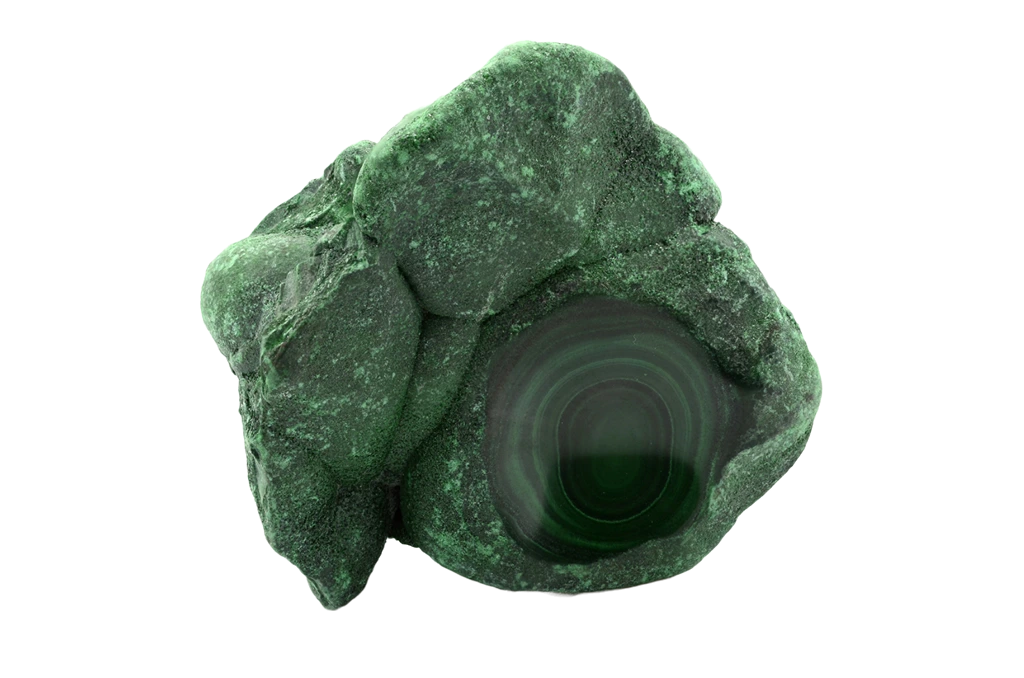
Malachite is a famous support stone but little-known for its grounding powers as Geodes. Their interiors are lined with blue, indigo, green, white, and gray crystals with swirling bands or botryoidal structures.
Malachite Geodes exist with healing crystals like Azurite, Chrysocolla, and Stalactites, forming multicolored exteriors.
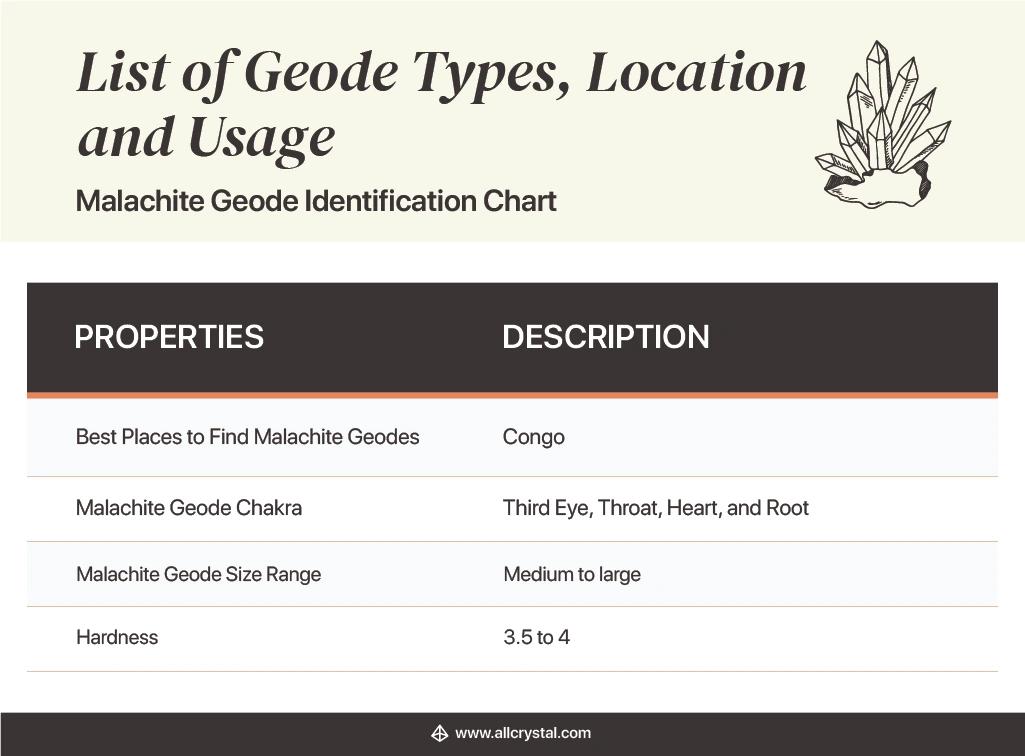
Chalcopyrite Geode
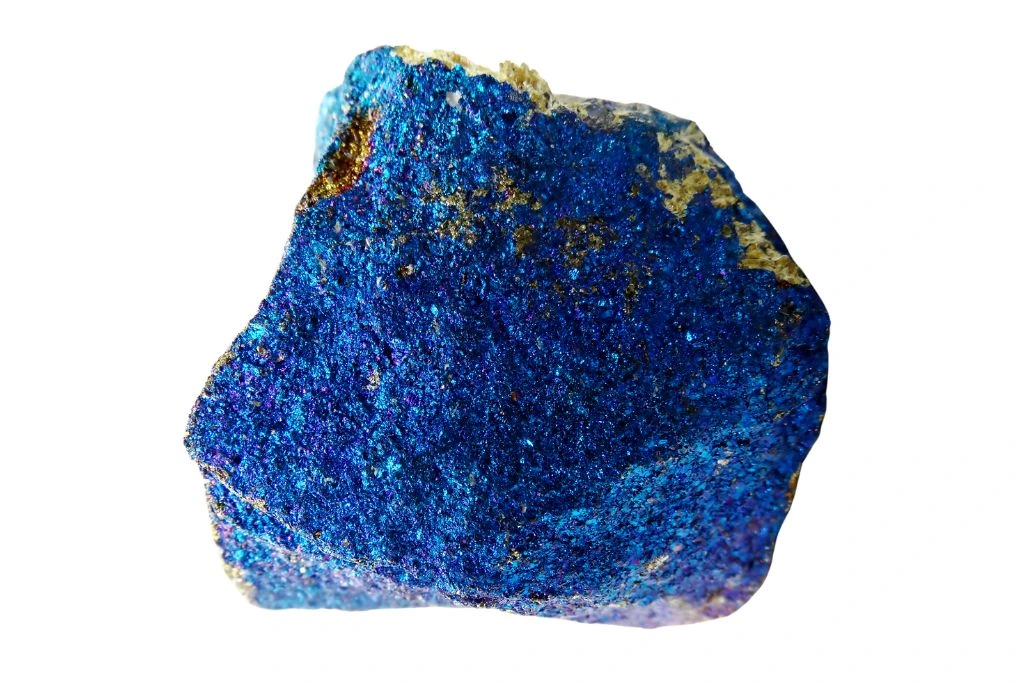
Chalcopyrite Geodes may be naturally-coated with red, white, and brown interiors. They’re great for powering crystal grids, especially for physical healing. However, if you notice purple or golden interiors, that may be a Chalcopyrite Geode or Faux Geode.
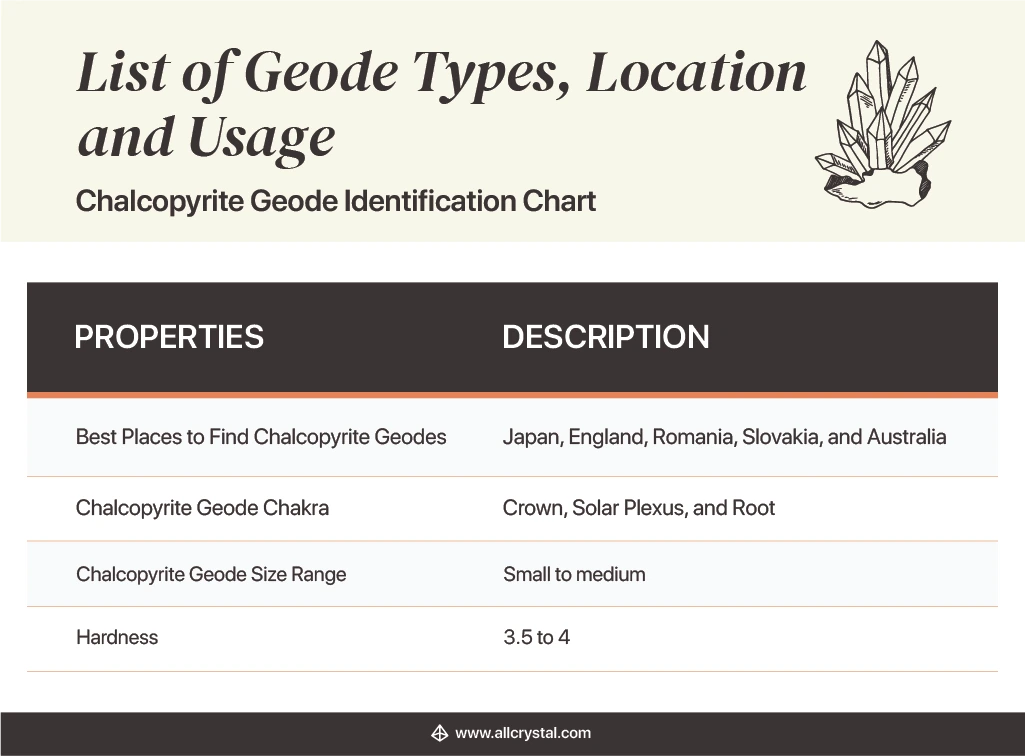
Prehnite Geode
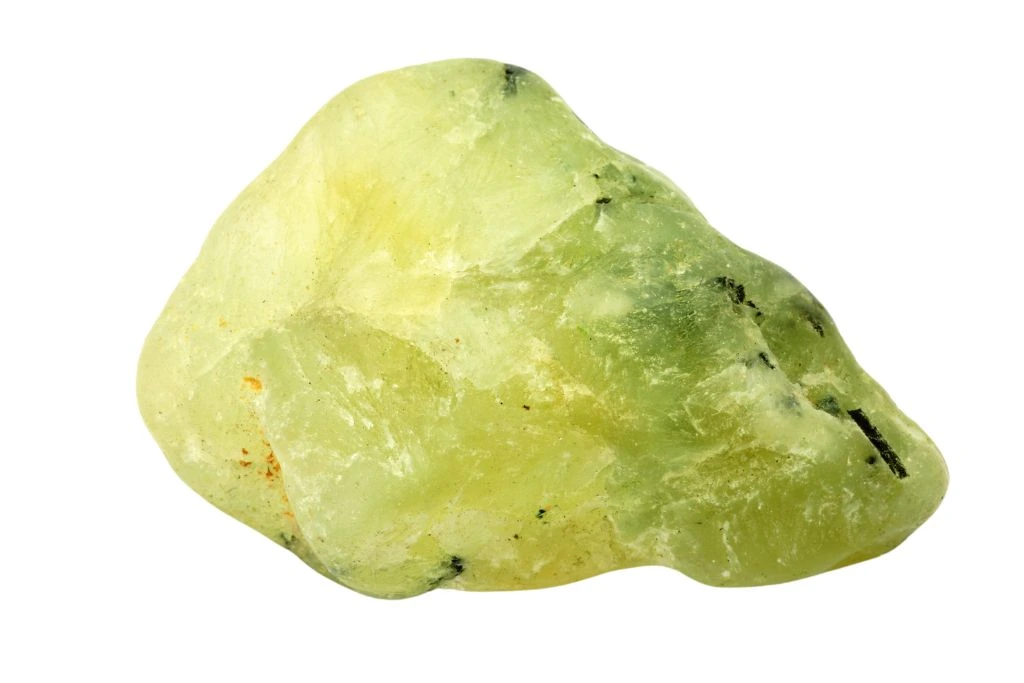
Seen with green, yellow, blue, white, or gray interiors, Prehnite Geodes show black, red, or dark gray exteriors. They show druzy, hexagonal pencils, and eggs inside the Geode.
Prehnite Geodes exist with Okenite, Quartz, Limonite, and Epidote. They attract prosperity, abundance, and harmony.
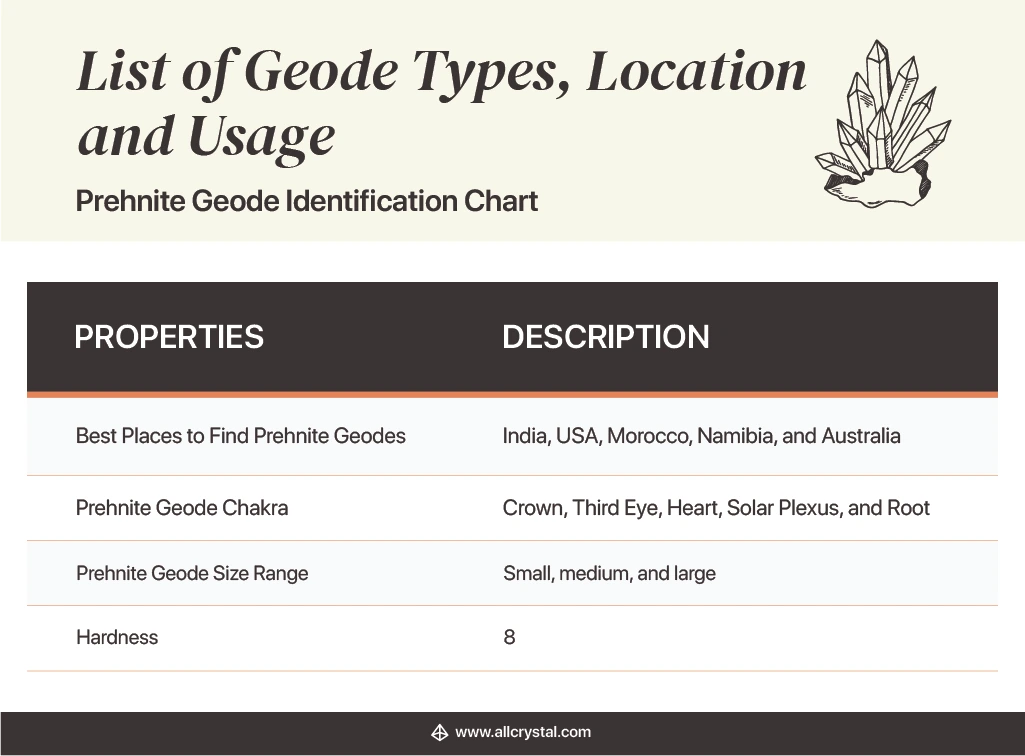
Magnetite Geode
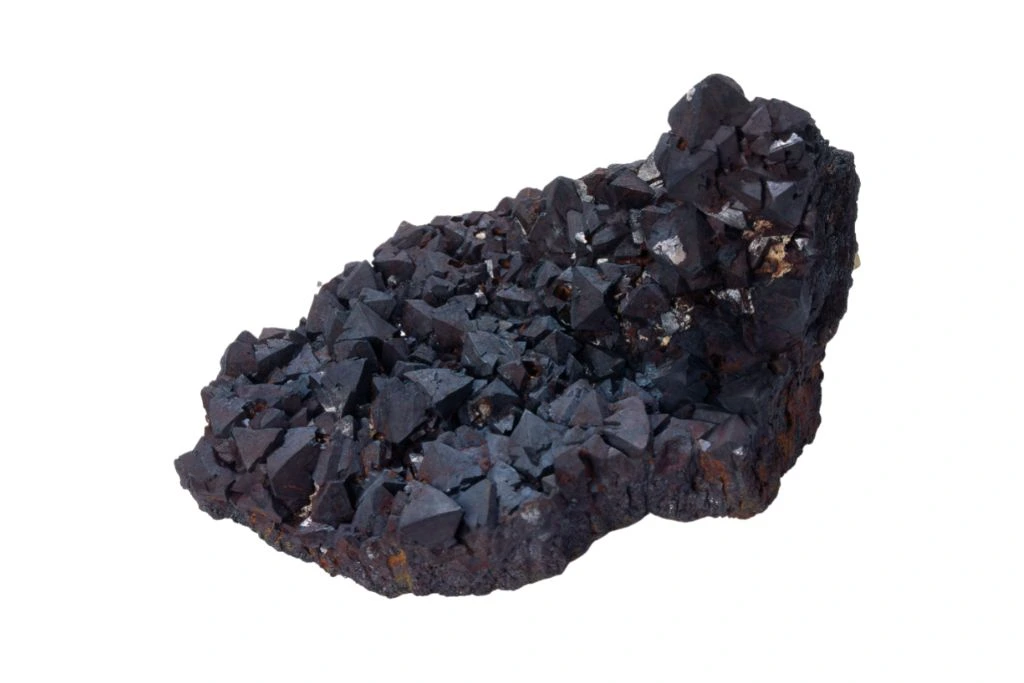
Many types of Magnetite form Geodes with druzy, single terminated, spray, or crystals inside with black, blue, yellow, gray, orange, peach, green, or white colors. The exteriors of Magnetite Geode show brown, beige, or dark colors. They’re best used for emotional balance and protection.
Magnetite Geodes exist with Hematite, Calcite, Siderite, Apatite, Pyrite, Epidote, Chalcopyrite, Pyrolusite, and Quartz.
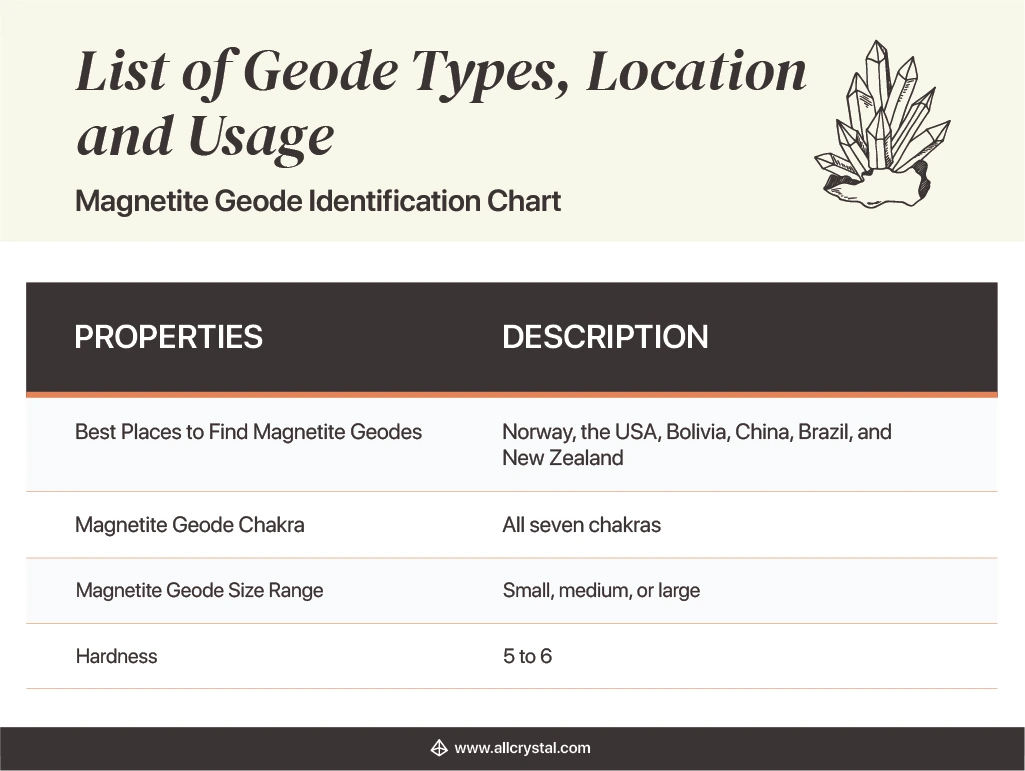
Opal Geode
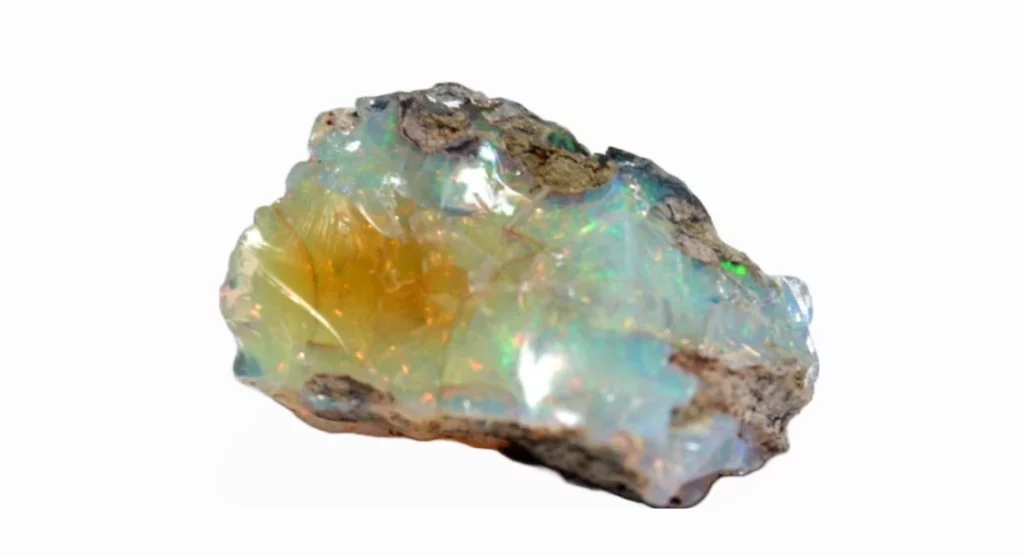
One of the most stunning Geodes, Opal forms colorful Geodes with multicolored cavities lined with druzy, point, slab, botryoidal, floaters, and eggs inside. They may show brown, yellow, beige, or gray exteriors with or without thick banding.
Opal Geodes form in Ethiopian, in Fire, Welo, Black, Red, Geyser, and Boulder varieties. Interestingly, Opal Geodes may exist with Pearl, Black Tourmaline, Chalcedony, and Graphite with Hyalite (Polymer Clay).
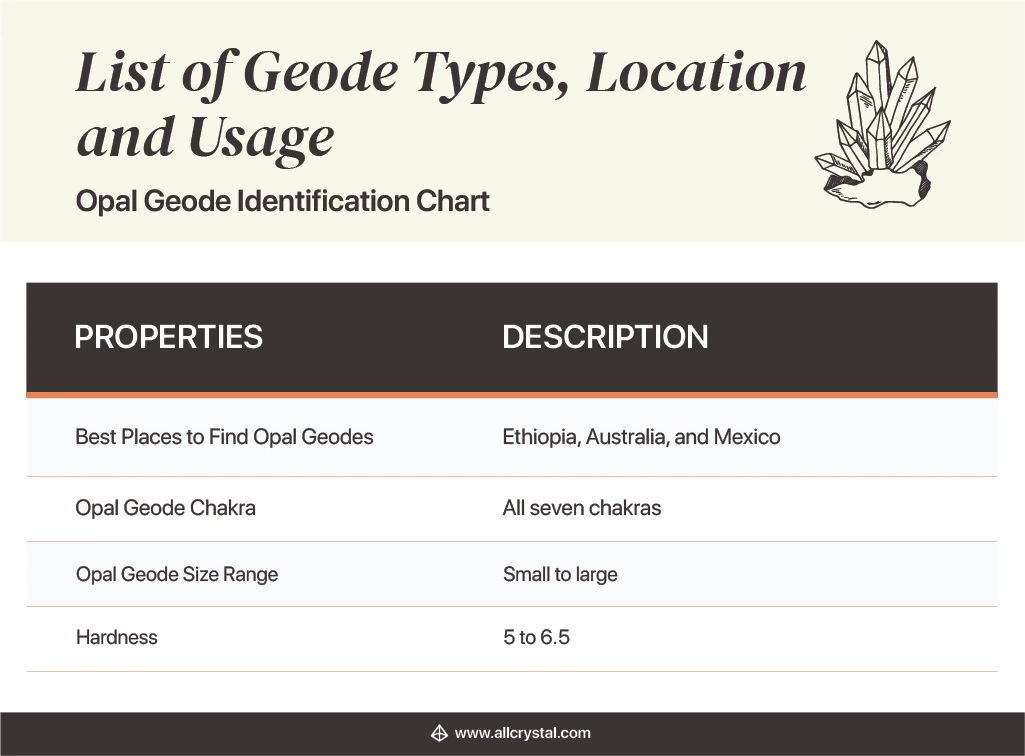
Epidote Geode
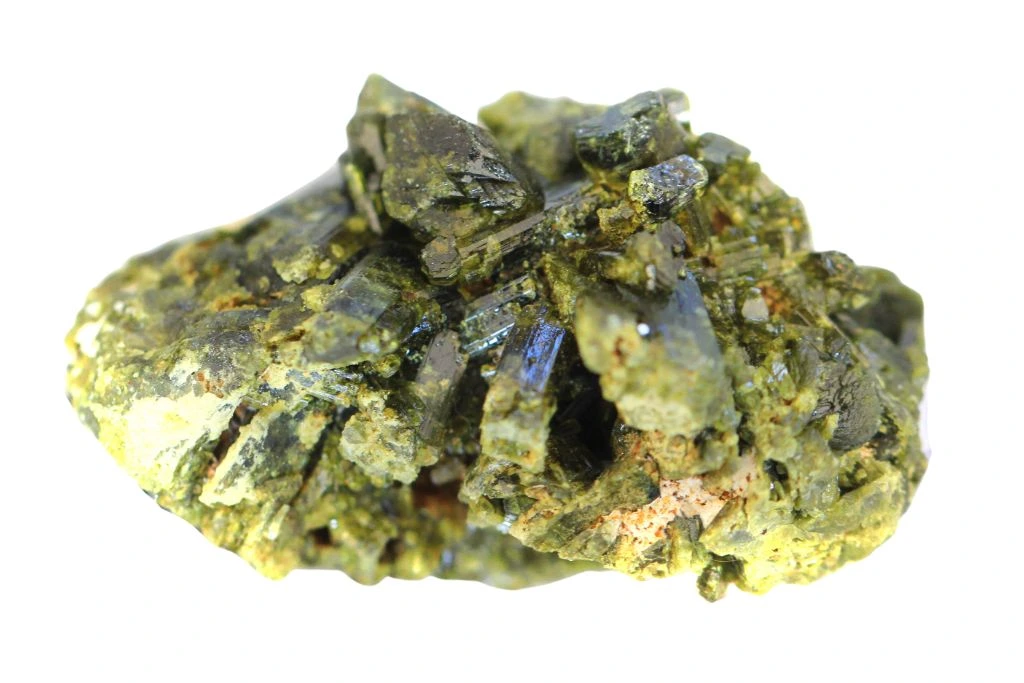
Being the Stone of Abundance, Epidote Geodes exist with a range of minerals, like Prehnite, Quartz, Tourmaline, Calcite, Amethyst, Cacoxenite, Hematite, and Garnet.
You may notice green, yellow, black, blue, gray, purple, brown, olivine, beige, or golden interiors in this crystal with dark or light exteriors. It forms rutile, druzy, or hexagonal pencils inside the cavity.
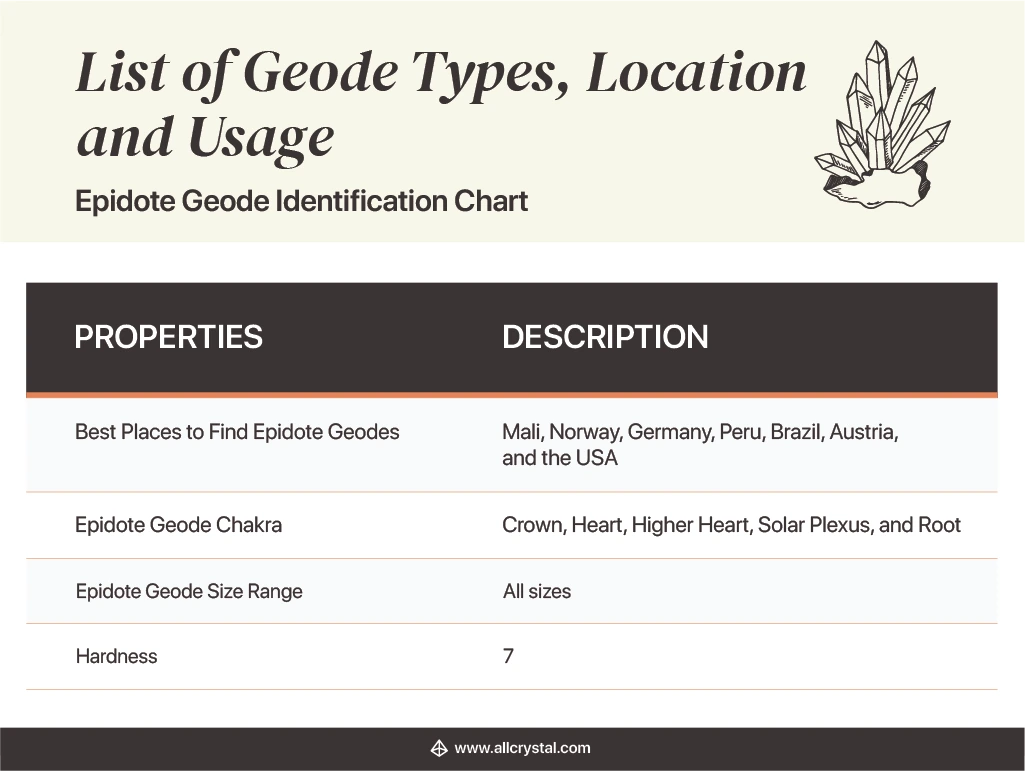
Azurite Geode
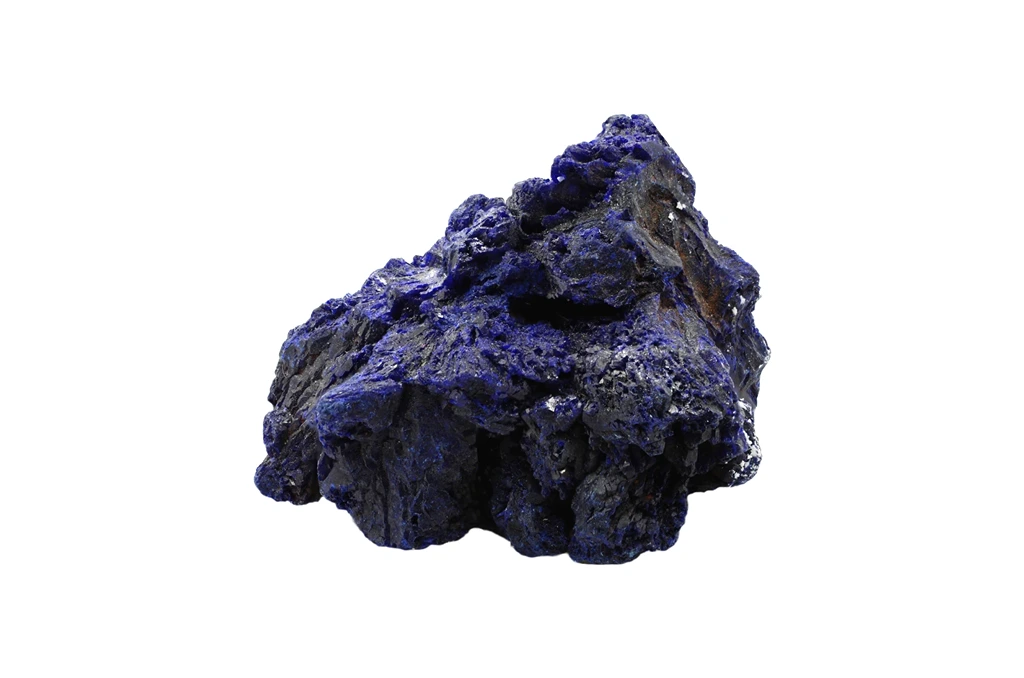
Azurite is a dazzling crystal, but Azurite Geodes are astral travel stones that protect you en route. They usually form as baby geodes coated inside with druzy crystals in different shades of vibrant blue.
The exterior of Azurite Geodes varies because of its many varieties. The most popular one is Blueberry Azurite Geode. Also, Azurite Geodes exist with Malachite crystals.
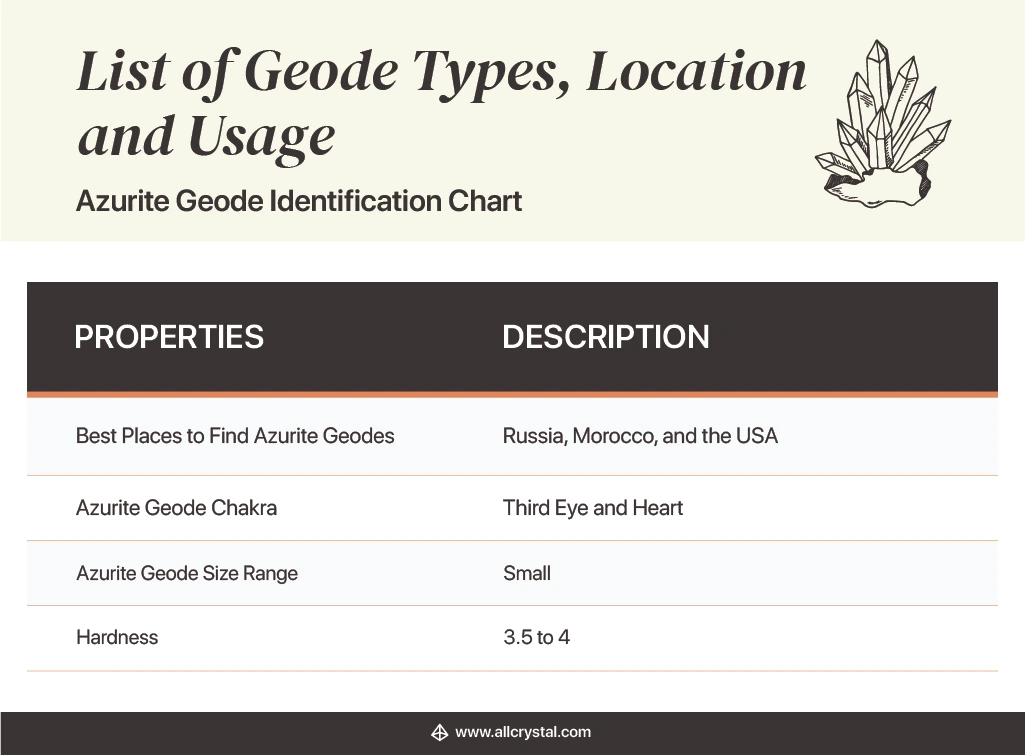
Scolecite Geode
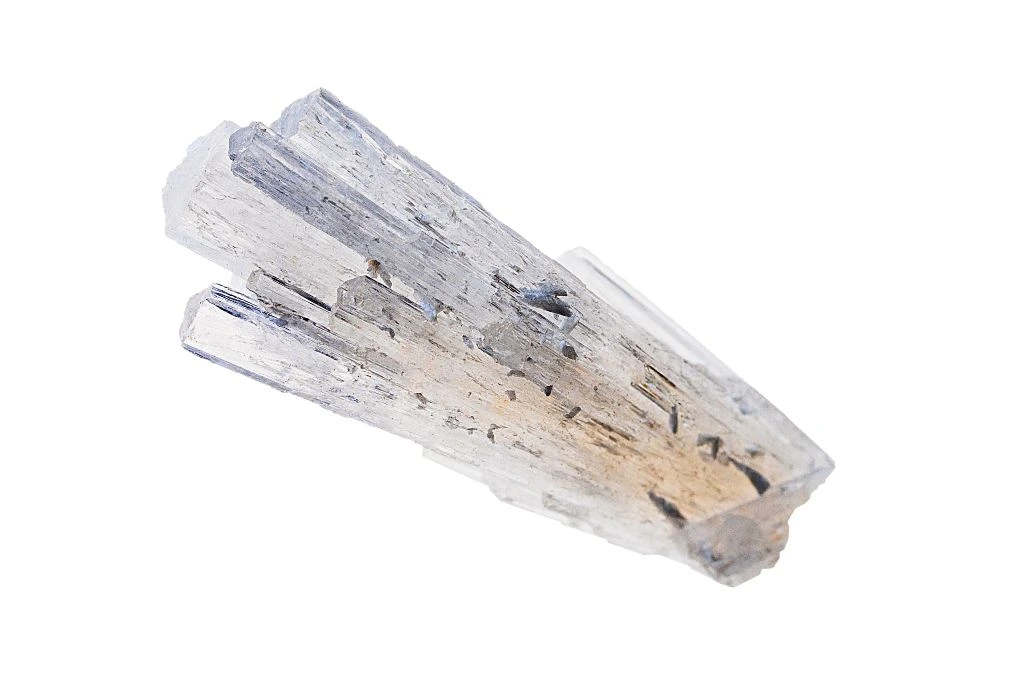
Scolecite is a high-vibration stone used for amplifying healing energies. As a Geode, Scolecite forms sprays, pencils, rods, points, and rosettes in white, pink, red, or green colors inside. The exterior of Scolecite Geodes may be black, blue, gray, or dark beige.
Scolecite Geodes typically exist with Green Apophyllite, Goosecreekite, Chalcedony, Heulandite, and Quartz.
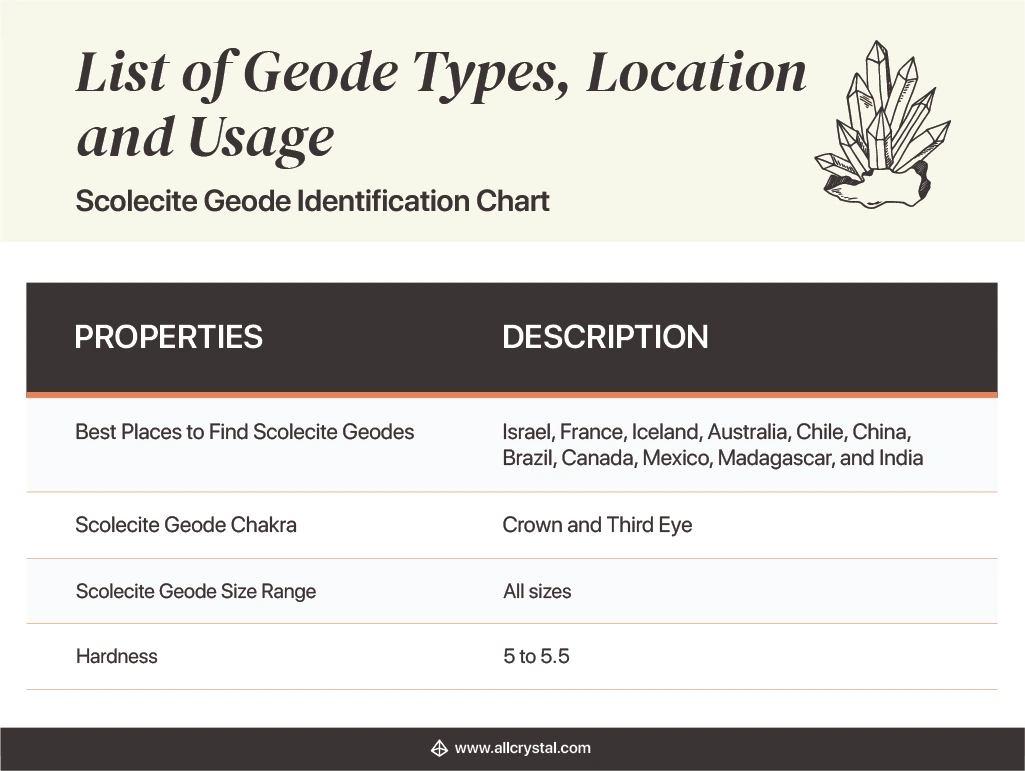
Apophyllite Geode
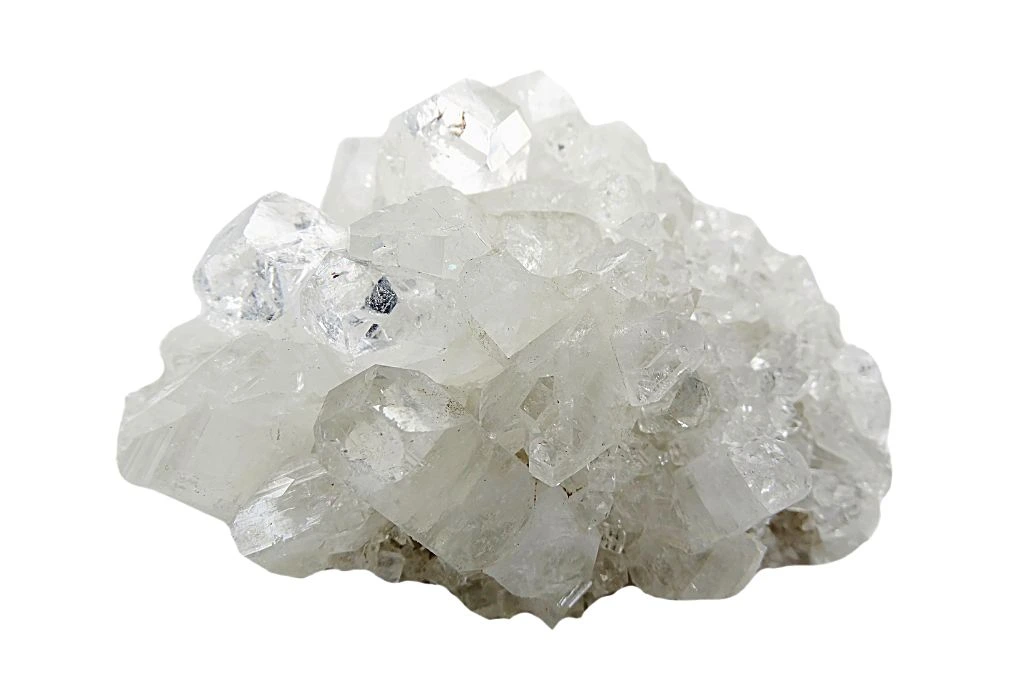
Resembling a large Celestite Geode, Apophyllite Geodes clear negativity from your aura, chakras, spaces, people, and objects. It exists with Stilbite, Scolecite, Calcite, Chalcedony, Heulandite, and Quartz.
The interiors of Apophyllite Geode may be gray, blue, white, green, peach, orange, milky, or purple, with druzy crystals, pencils, shards, wands, and points.
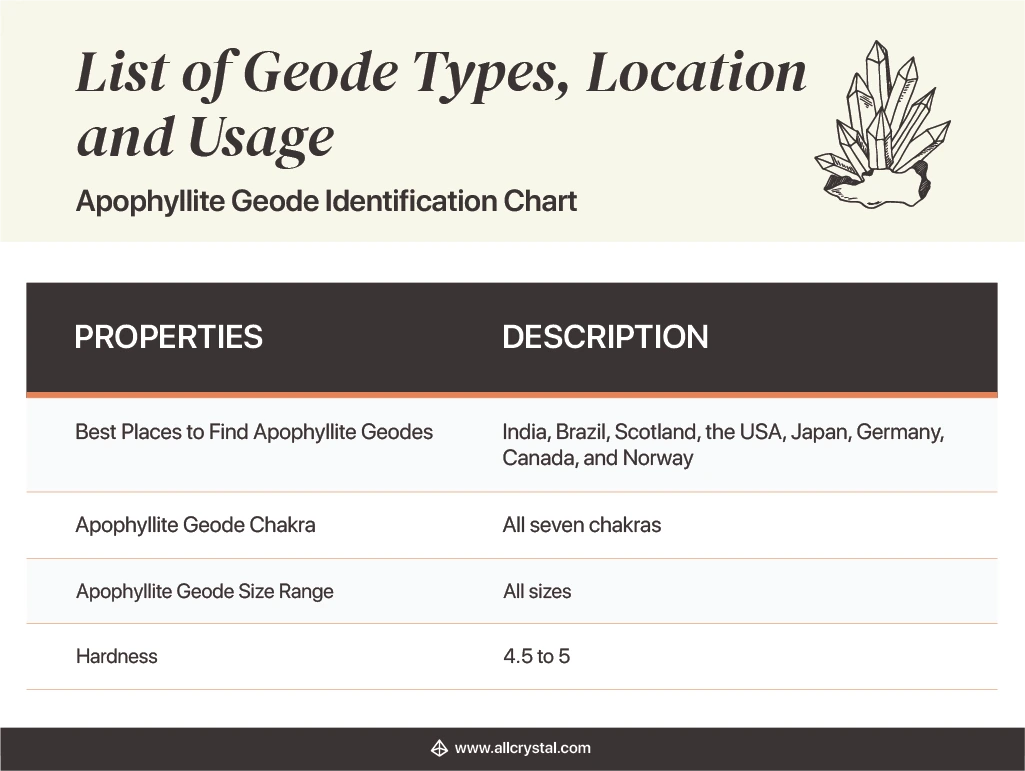
Hematite Geode
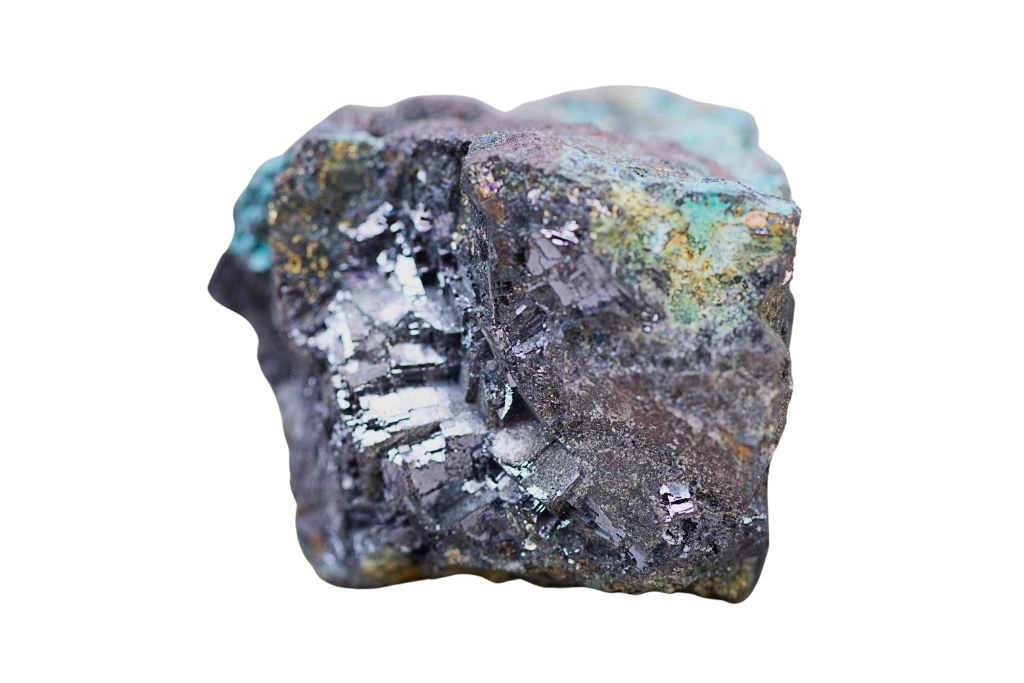
Seen in light-colored, rounded exteriors, Hematite Geodes form eggs, sprays, floaters, botryoidal crystals, points, and druzy interiors. They may look red, yellow, orange, black, white, gray, brown, pink, or purple inside. The best way to use Hematite is for protection.
Hematite Geodes form with Cobalt, Clear Quartz, Amethyst, Dolomite, Sphalerite, Chalcopyrite, Calcite, Aragonite, Galena, Chalcedony, and Pyrite.
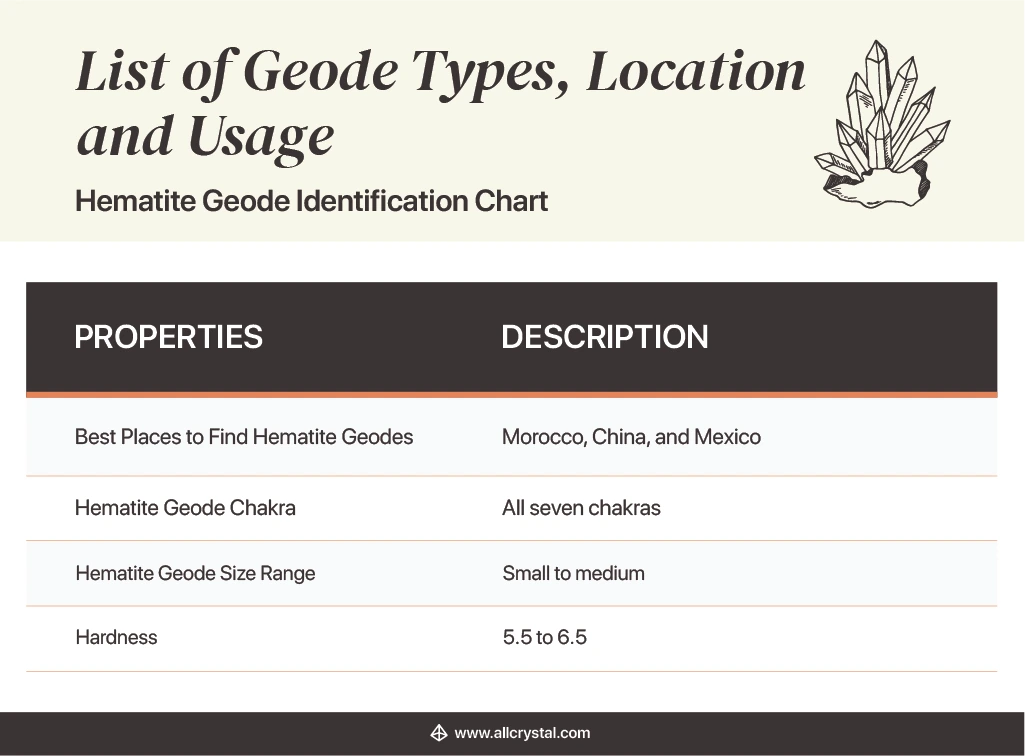
Septarian Geode
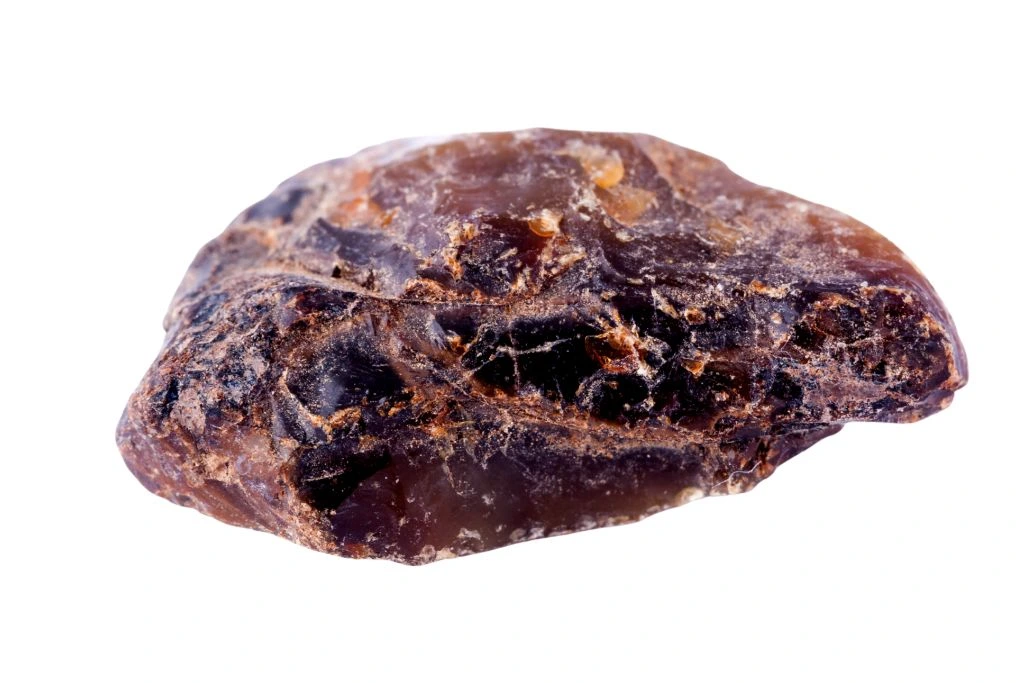
Septarian Geodes look like alien eggs and are almost always round or oval with veins, chains, or dendritic patterns. The interior may show green, white, yellow, black, brown, orange, or blue colors.
Did you know Septarian crystals are great for health, grounding, fertility, and charging? Septarian Geodes are usually found with Quartz or Calcite filling.
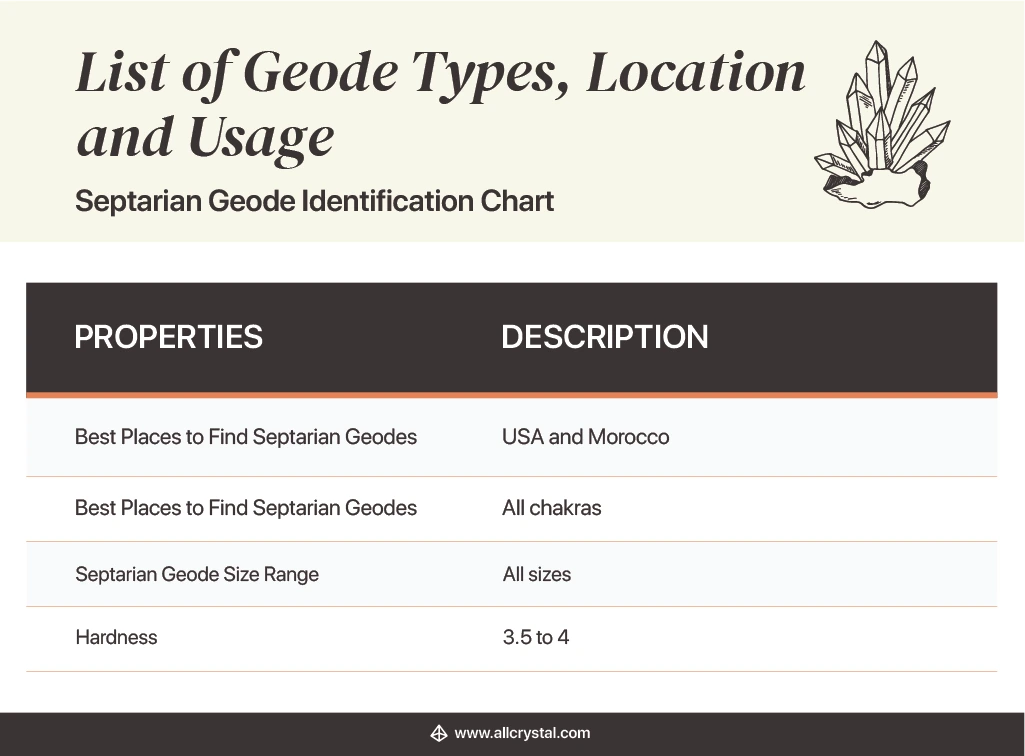
Carnelian Geode
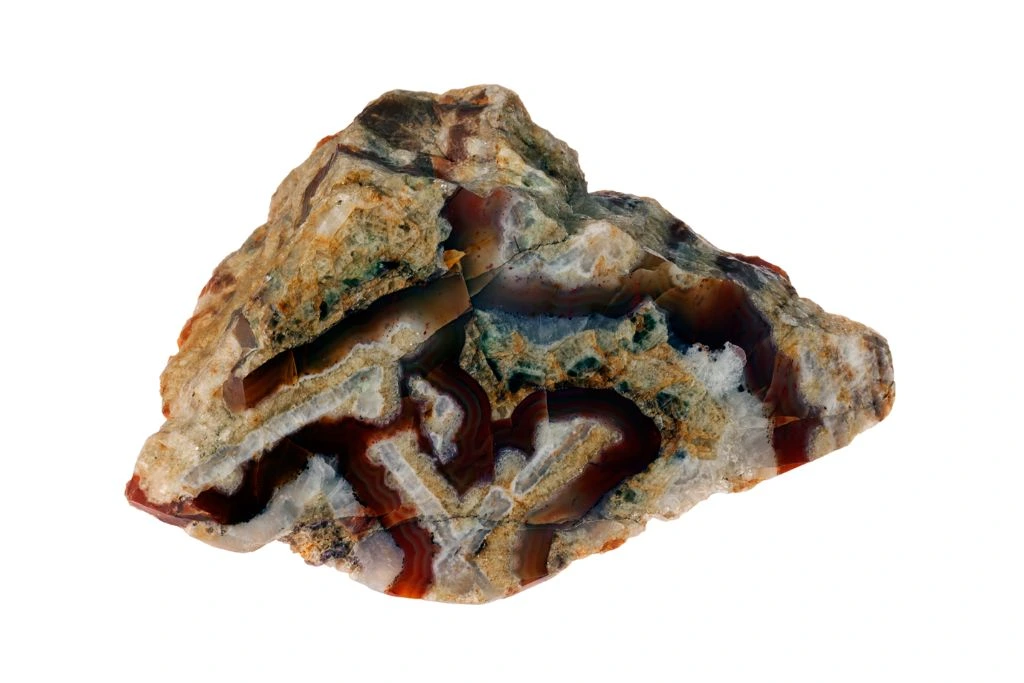
Carnelian Geodes form druzy crystals, towers, or eggs in the interiors. Typically, the colors inside are white, orange, red, brown, pink, gray, or yellow, with or without agate banding.
Apart from Geodes, Carnelian forms Thunder Eggs and Thunder Egg Geodes. Interestingly, there’s a veined Carnelian Geode called Dragon Egg.
What’s the difference between a Geode and a Thunder Egg? Geodes have a hollow cavity inside, while Thunder Eggs have solid crystal cores without cavities.
Are Thunder Eggs worth money? Yes, their cost depends on the different crystals in them. Take them to a geologist to know more!
On the outside, Carnelian Geodes show red, yellow, or orange colors and may exist with Quartz. They’re great for healing infertility and disorders associated with the reproductive system.
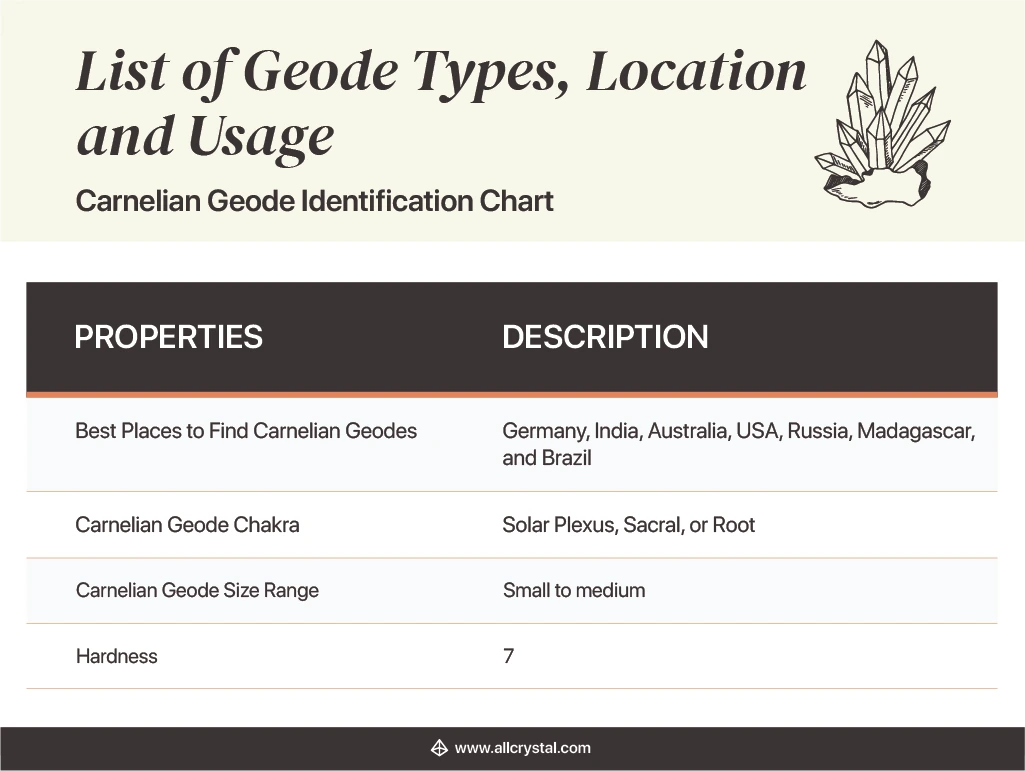
Prasiolite Geode
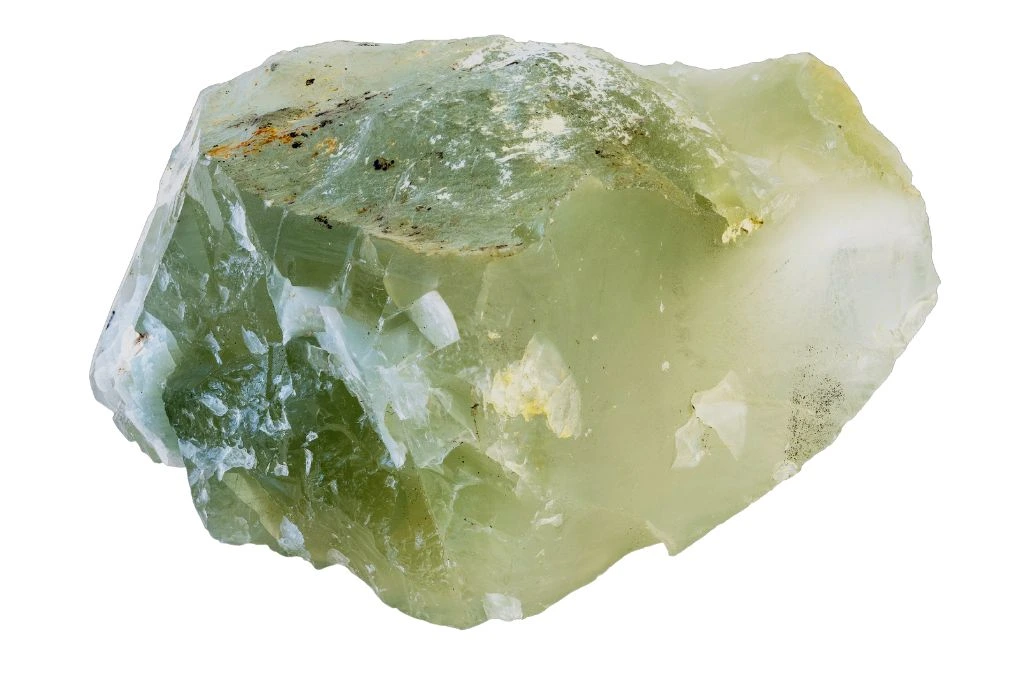
With druzy white, gray, green, blue, and black interiors, Prasiolite Geodes often form with banding. It’s great for psychic abilities, cosmic awareness, and abundance. The exterior of Prasiolite Geodes is often black, gray, or dark.
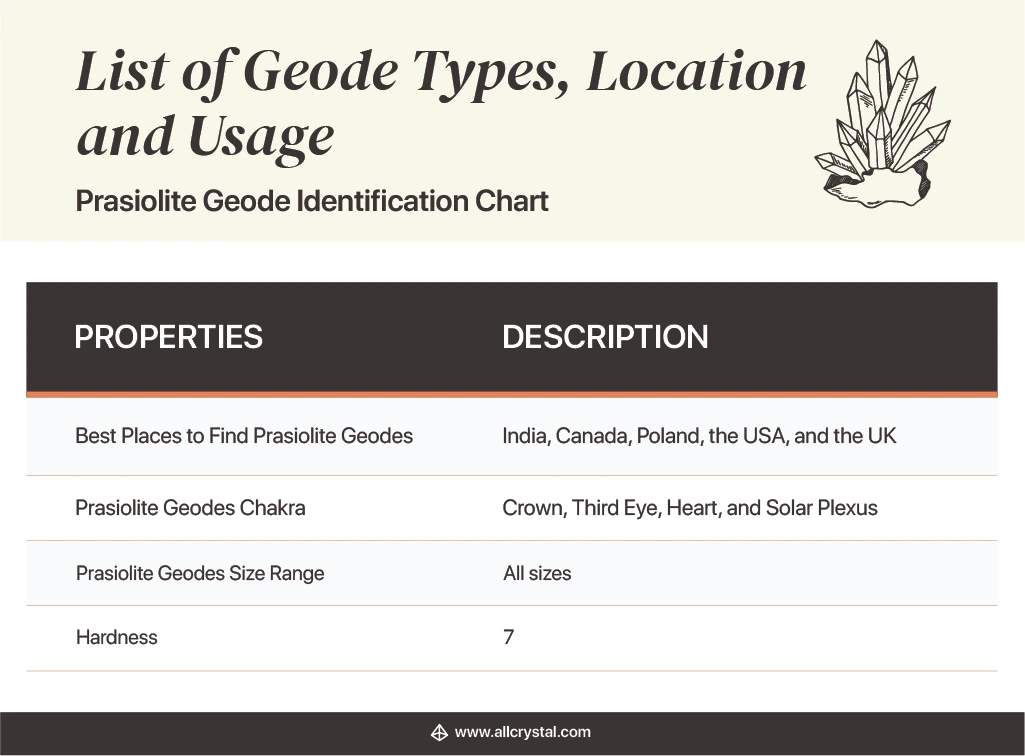
Rose Quartz Geode
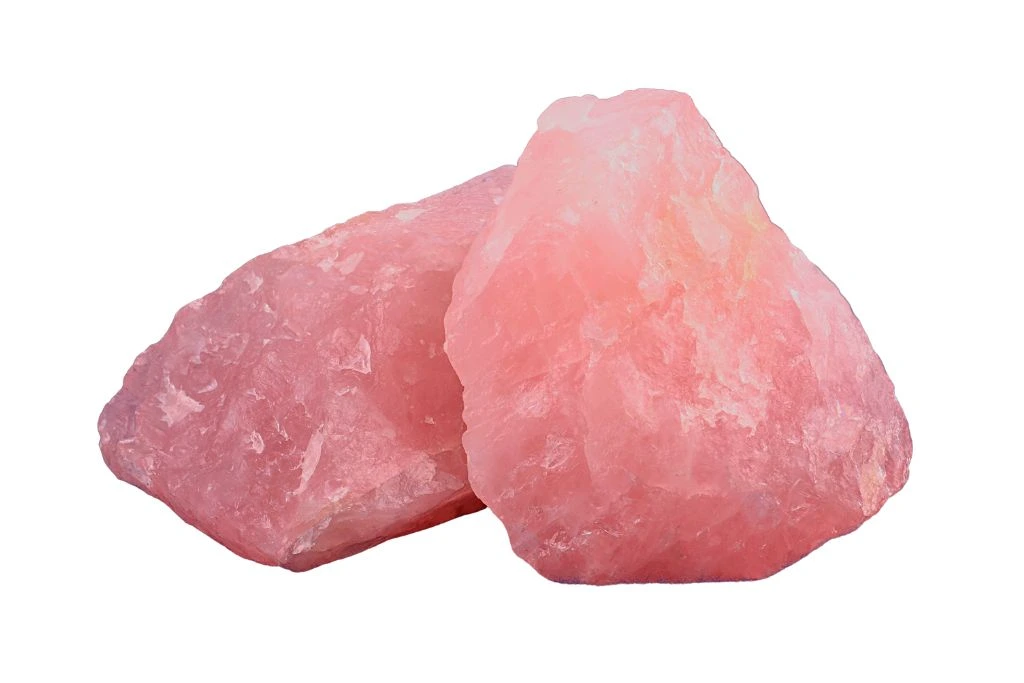
Rose Quartz is another Quartz crystal that forms gorgeous Geodes and spreads unconditional love. It’s so popular there’s a trend of couples proposing with their engagement rings inside Rose Quartz Geodes.
You’ll find druzy or crystal interiors in Rose Quartz Geodes with pink, peach, rose, brown, or white hues. Typically, Rose Quartz Geodes show gray, white, brown, or yellow exteriors with or without white banding along the edges.
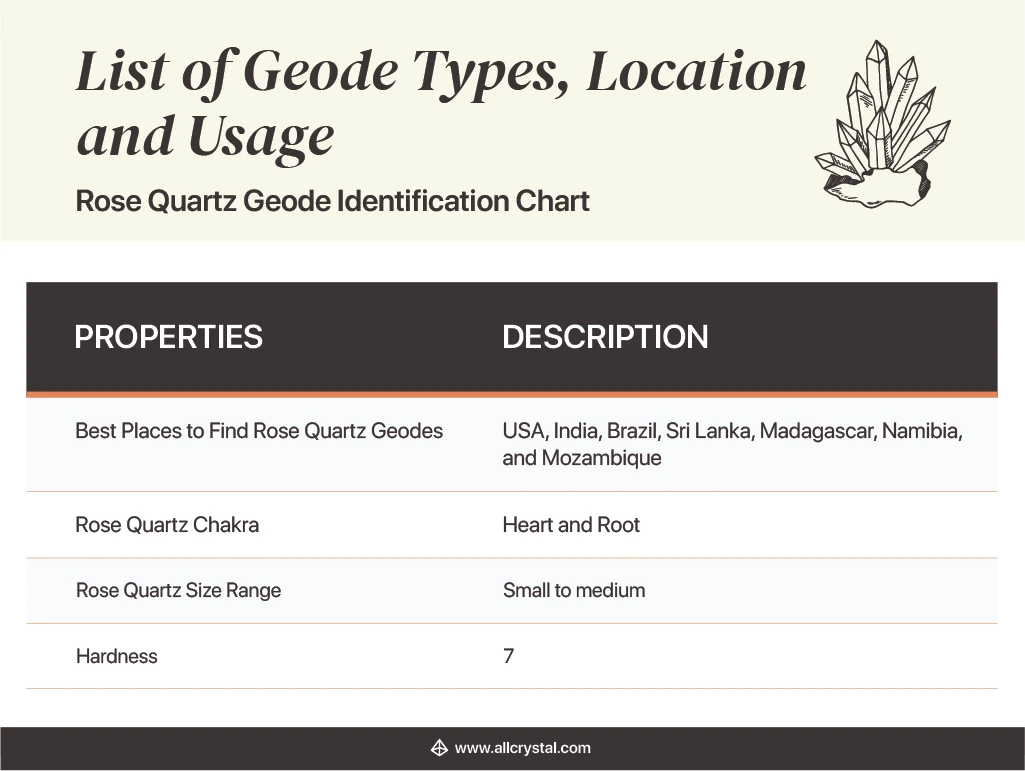
FAQ
- What is the rarest type of Geode?
The rarest Geode is a mix of Amethyst and Black Calcite that fetches ridiculously high prices.
- How do I know what kind of Geode I have?
To identify your Geode, it’s good to write down its shape, the color of the interior crystals, the shapes of the crystal inside, the color of the exterior, its weight, optical illusions, and other characteristics. Finally, compare it to the above guide of 30 Types of Geode Rocks.
- What are the most common Geodes?
The most common Geodes in nature are Quartz, Chalcedony, Pyrite, Dolomite, and Limonite.
- What Geodes are worth money?
Geodes worth money are those with striking colors, unique patterns, and the presence of one or more crystals.
- How do you tell if a rock is a Geode?
You can tell if a rock is a Geode without opening by assessing the weight, color, shape, and traits of its exterior.
- Where are Geodes most commonly found?
Geodes are mostly found in deserts, beaches, riverbeds, or ash beds. In the US, Geodes are most commonly found in Utah, Missouri, Nevada, Iowa, and California.
- How do you clean the inside of a Geode?
You can soak the Geode for 8 to 12 hours in water, vinegar, or ammonia.
- What’s the difference between Geode and Agate?
Agate crystals form solid Chalcedony crystal cores, while Geodes have air pockets where crystals grow by protruding along the walls.
- What’s a Thunder Egg Geode?
Thunder Egg Geodes have two centers; one being the small cavity or pocket and the other being a solid core of crystals.
In a Nutshell: Start Identifying All Types of Geodes!
Whether you’re planning to buy a geode or want to identify the type of Geode rock, we hope the above information helps you learn the many types of Geode rocks.
Geodes have two types of forms – sedimentary and volcanic rocks. Different minerals inside the air pocket add to the uniqueness of its interiors, like druzy, hexagonal pencils, crystals, points, towers, sprays, and eggs in Geodes.
You can keep crystals and objects inside any Geode to clear negativity stuck to it. The same method is used for charging crystals and small objects.
Apart from the above 30 types of Geodes we talked about, there are endless Geodes to be discovered. But a recently discovered Geode from China is an egg-shaped Dinosaur Egg Geode with white crystals inside.
Food for thought: What chakra would a real Dinosaur Egg Geode open?


